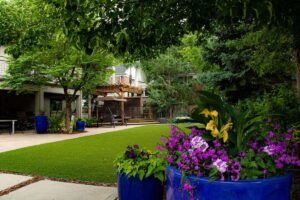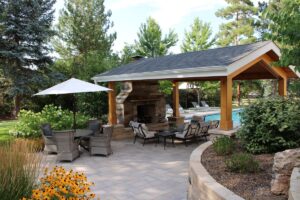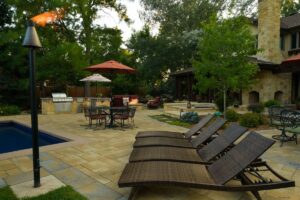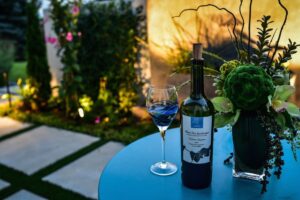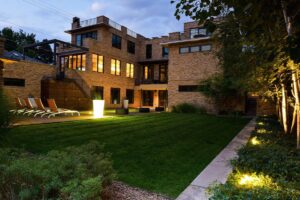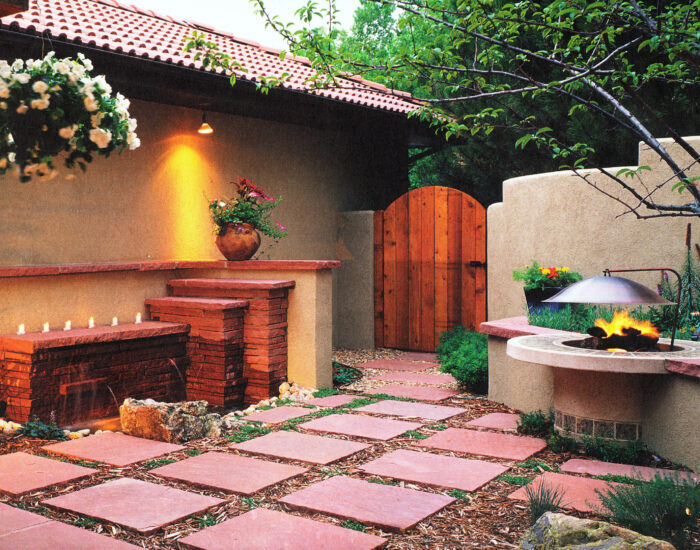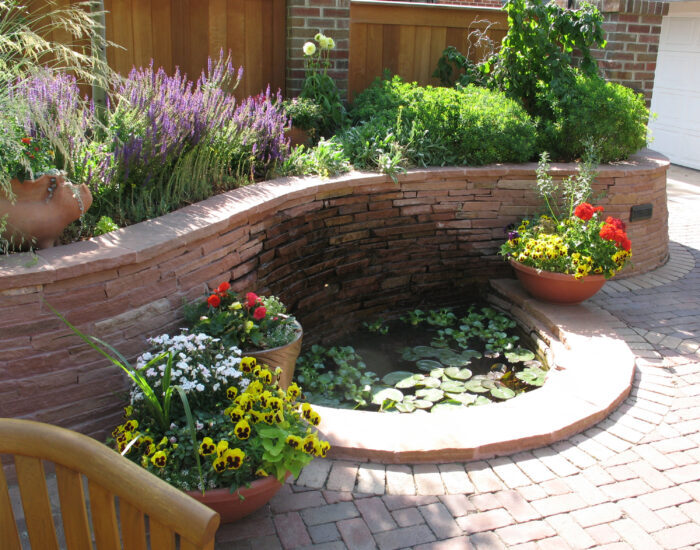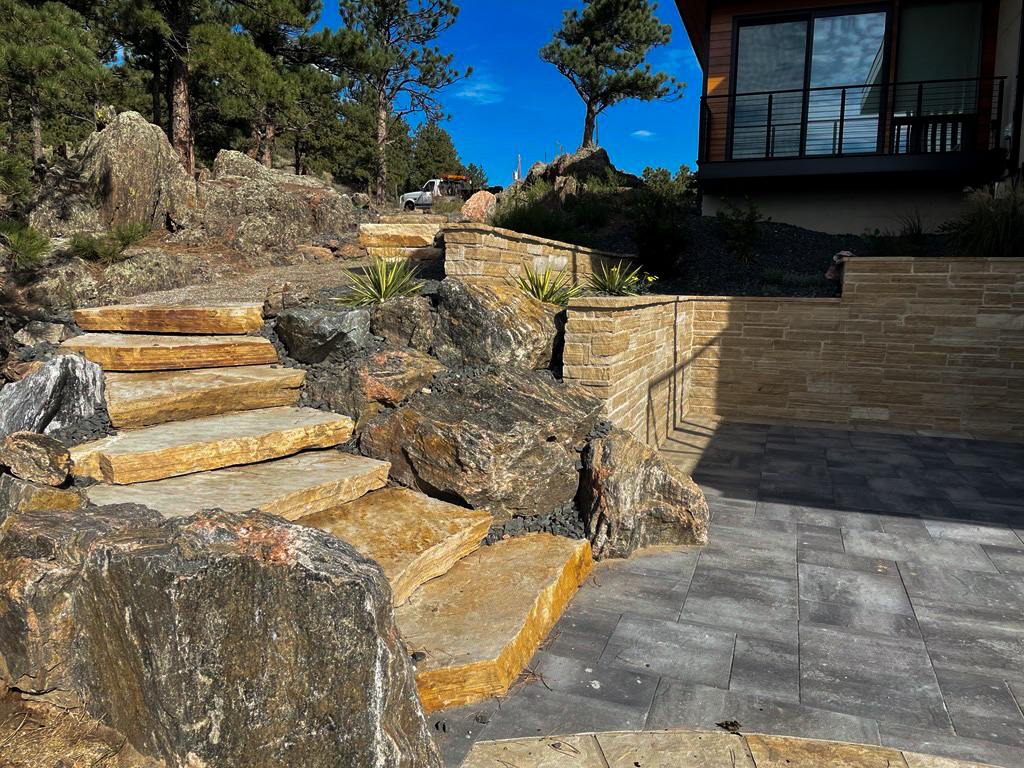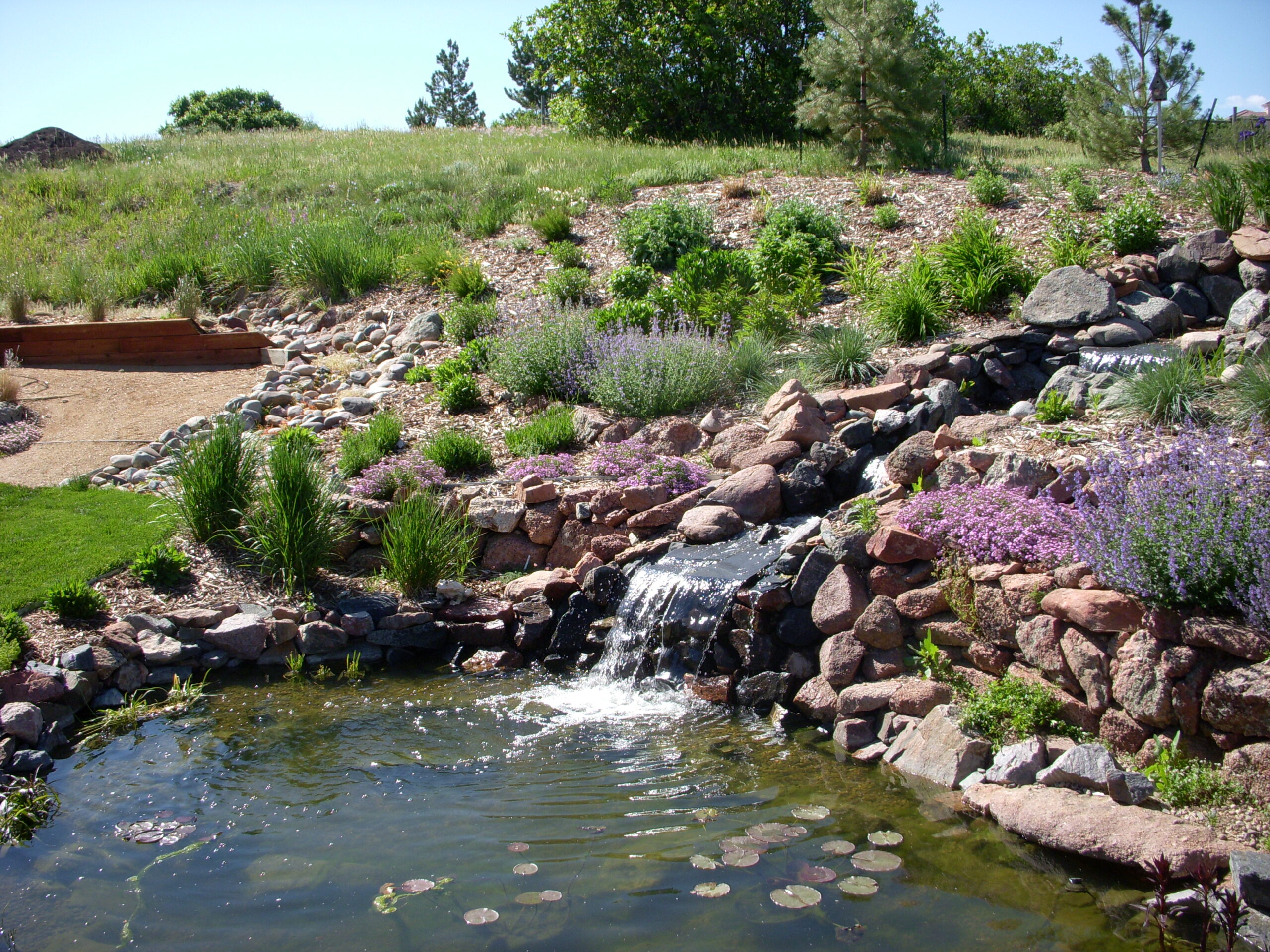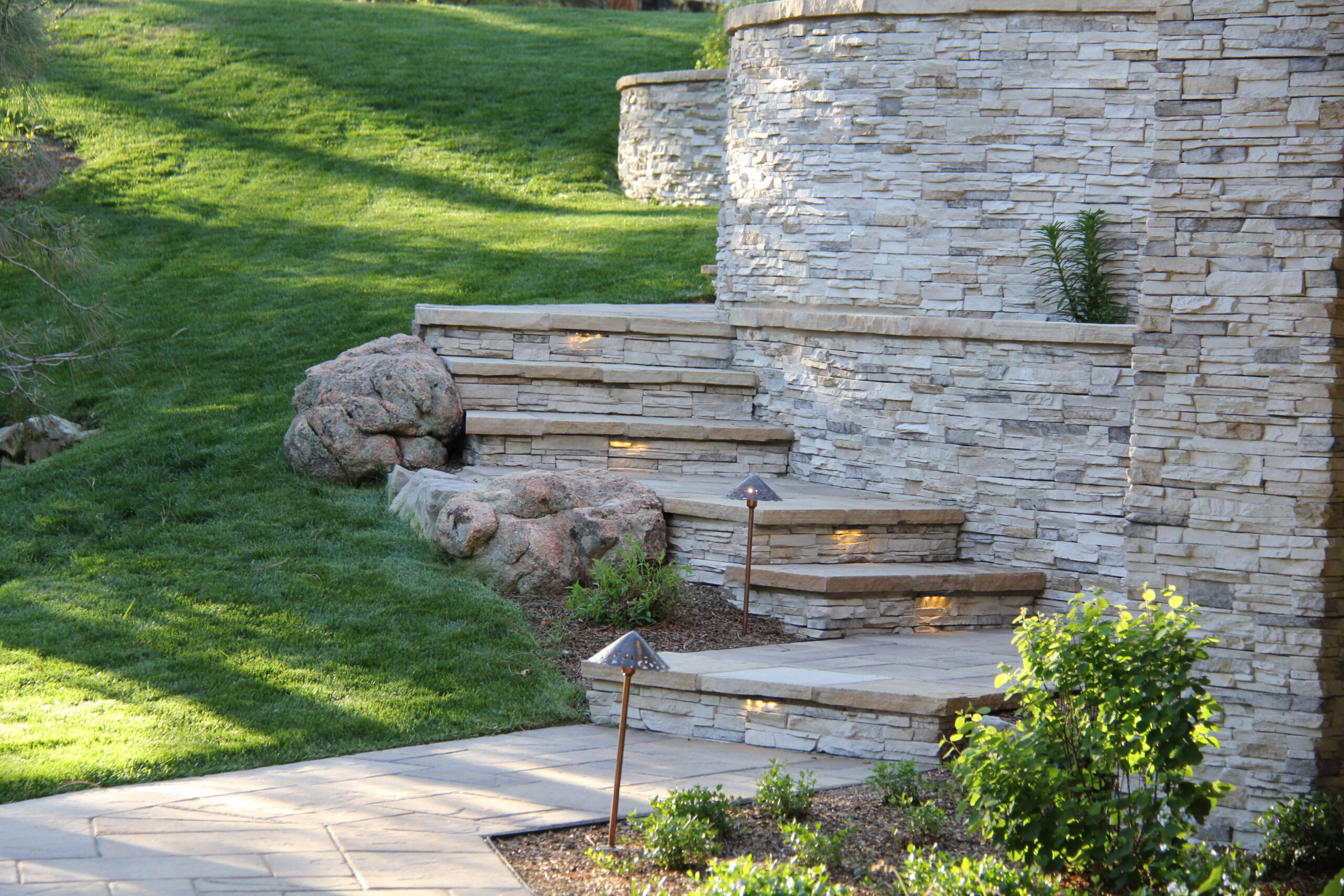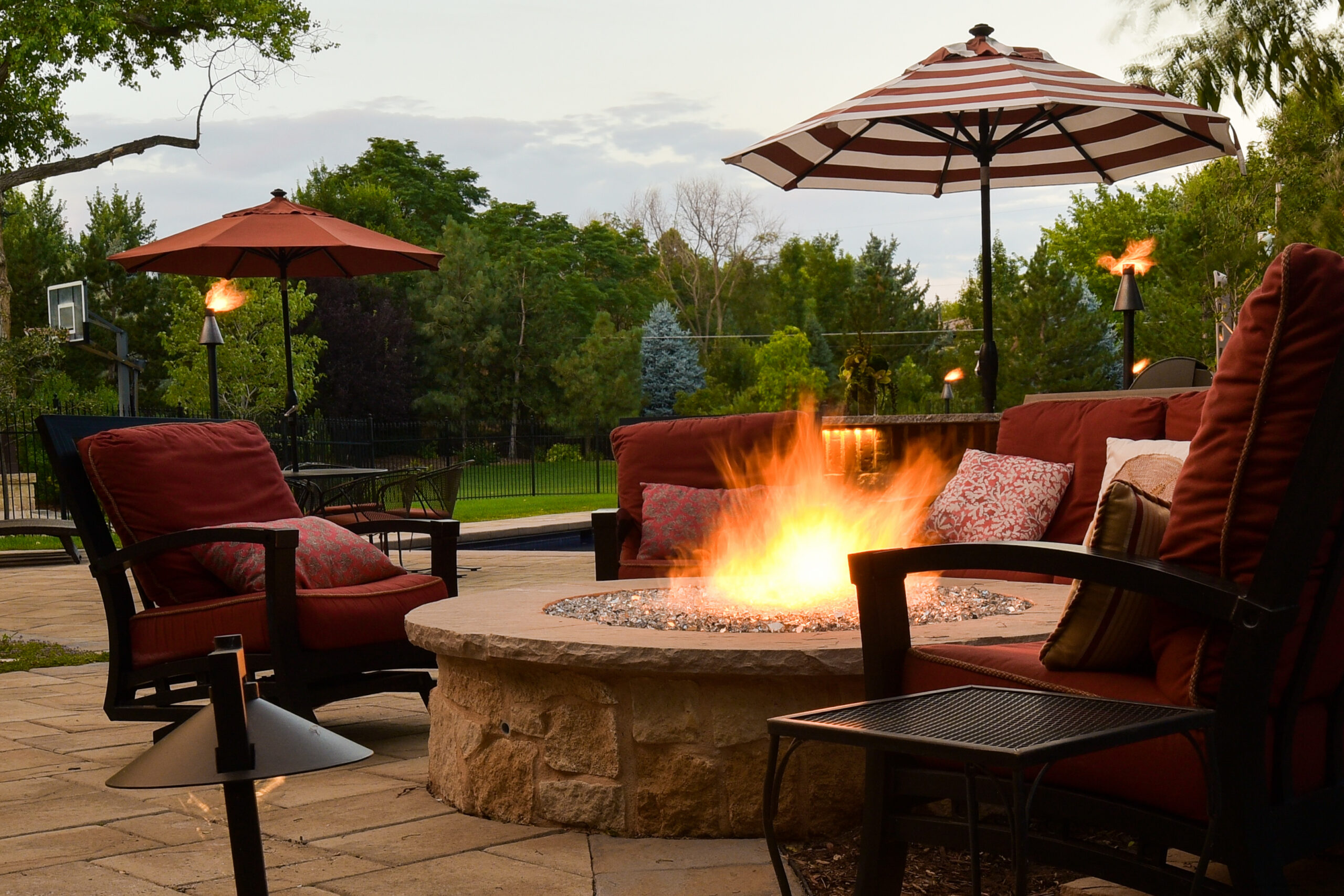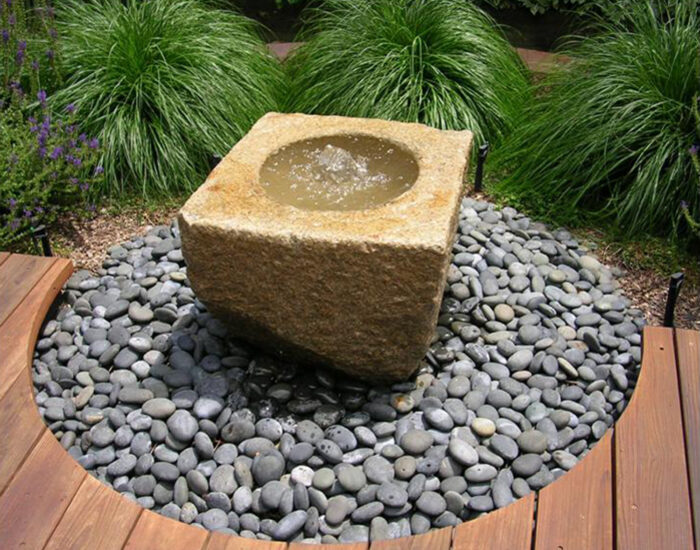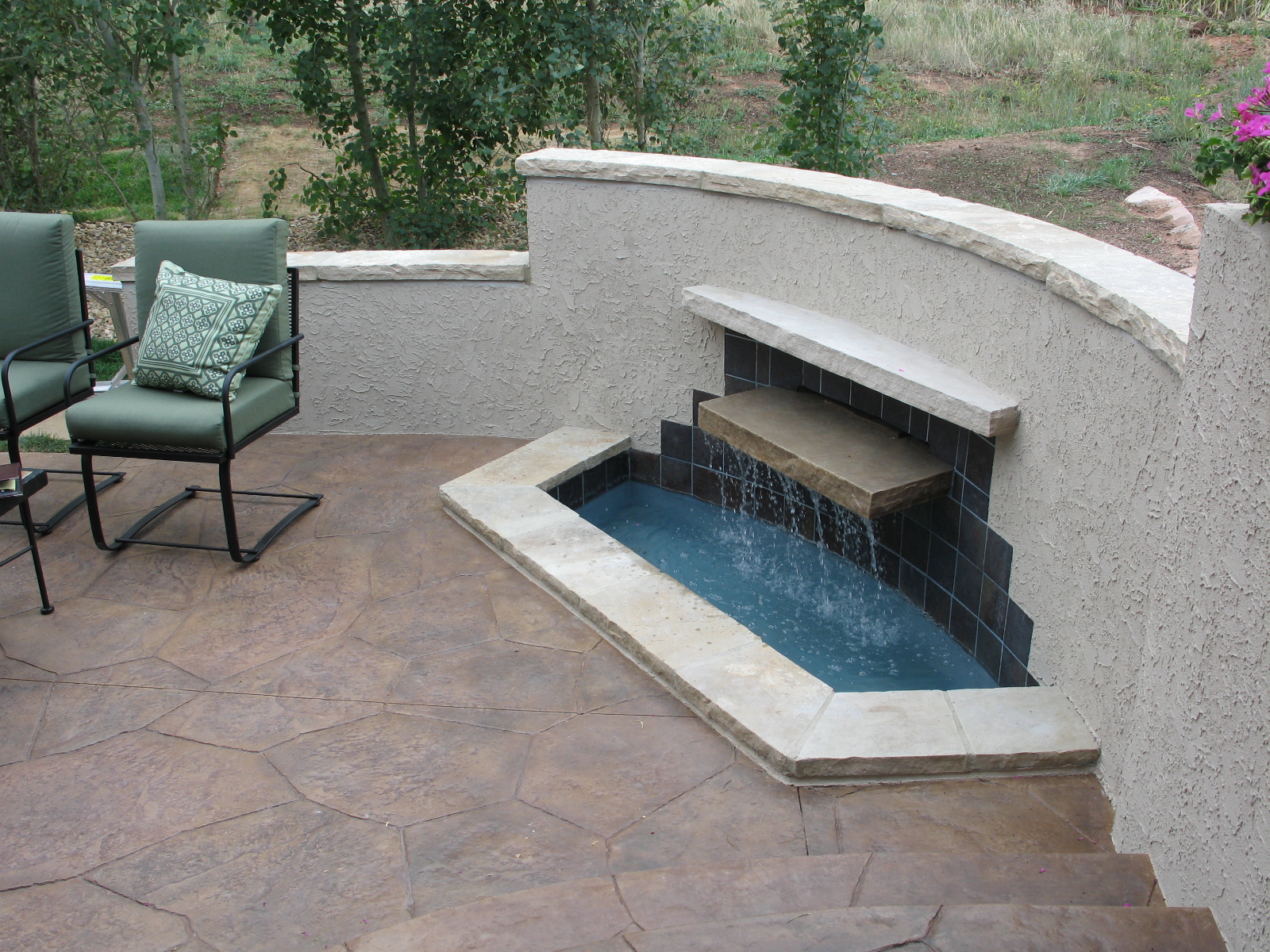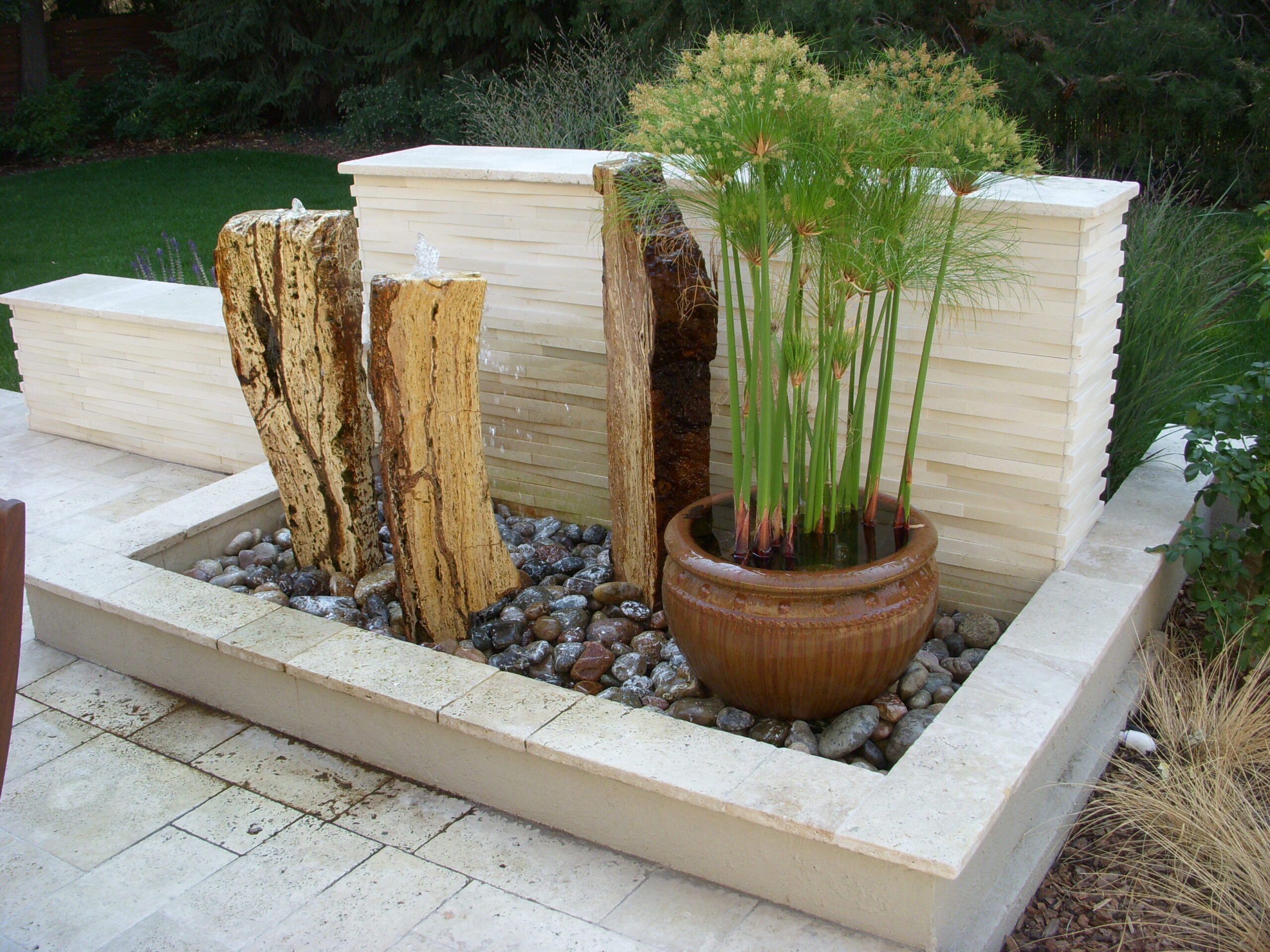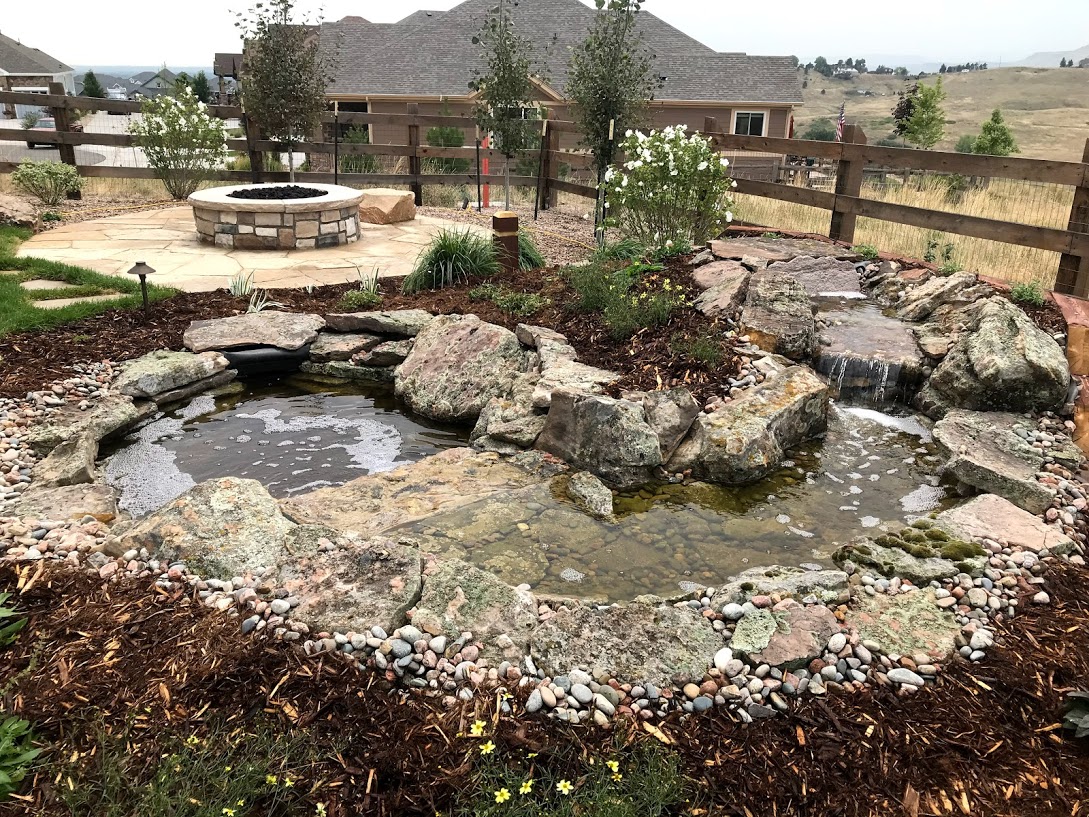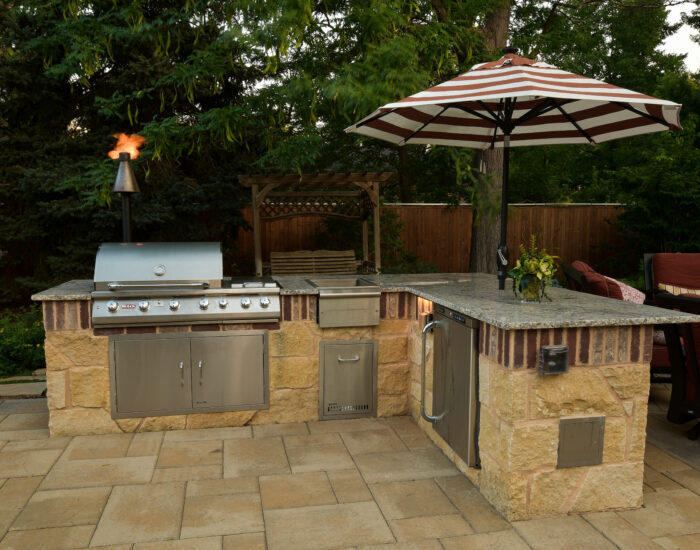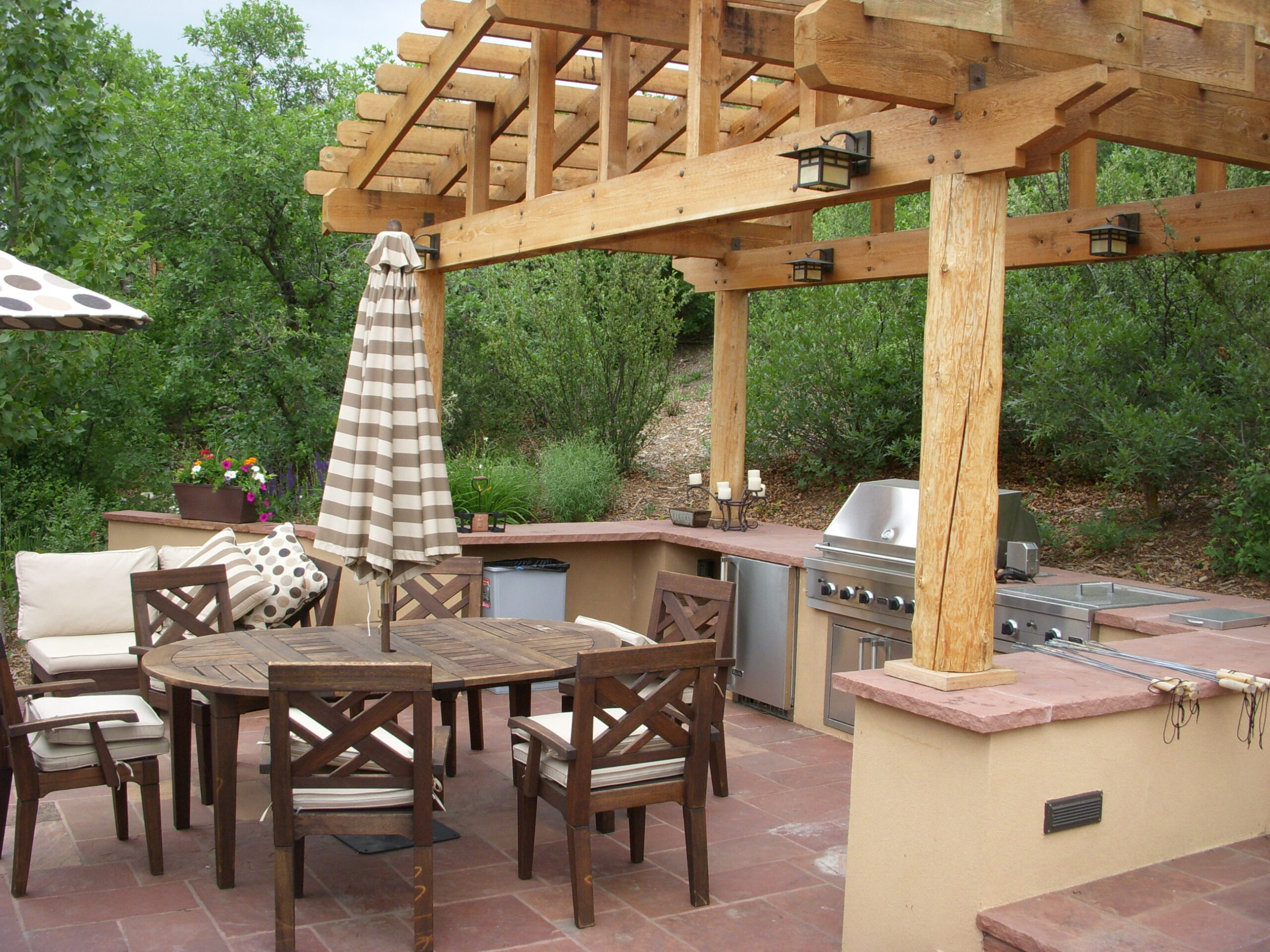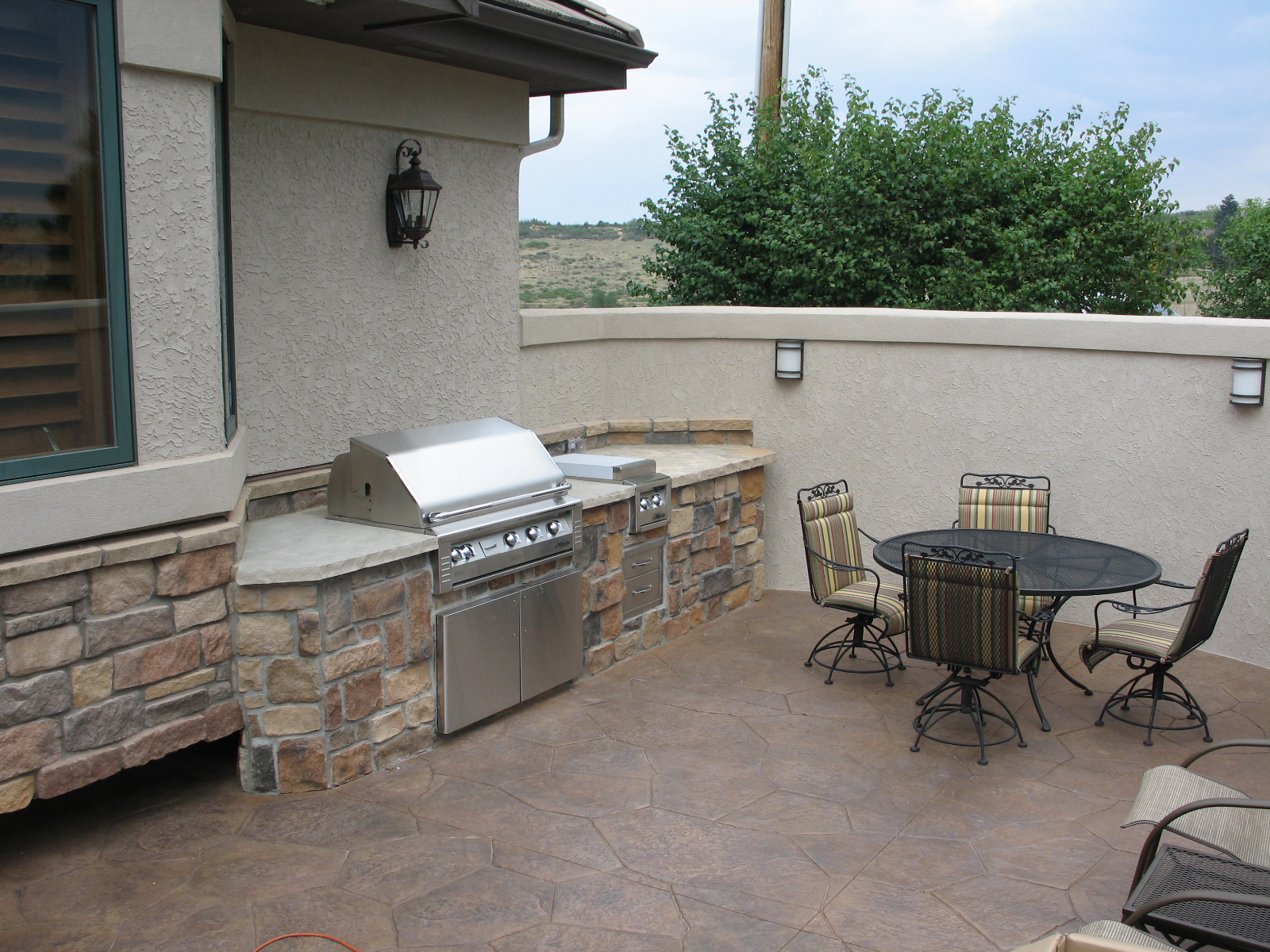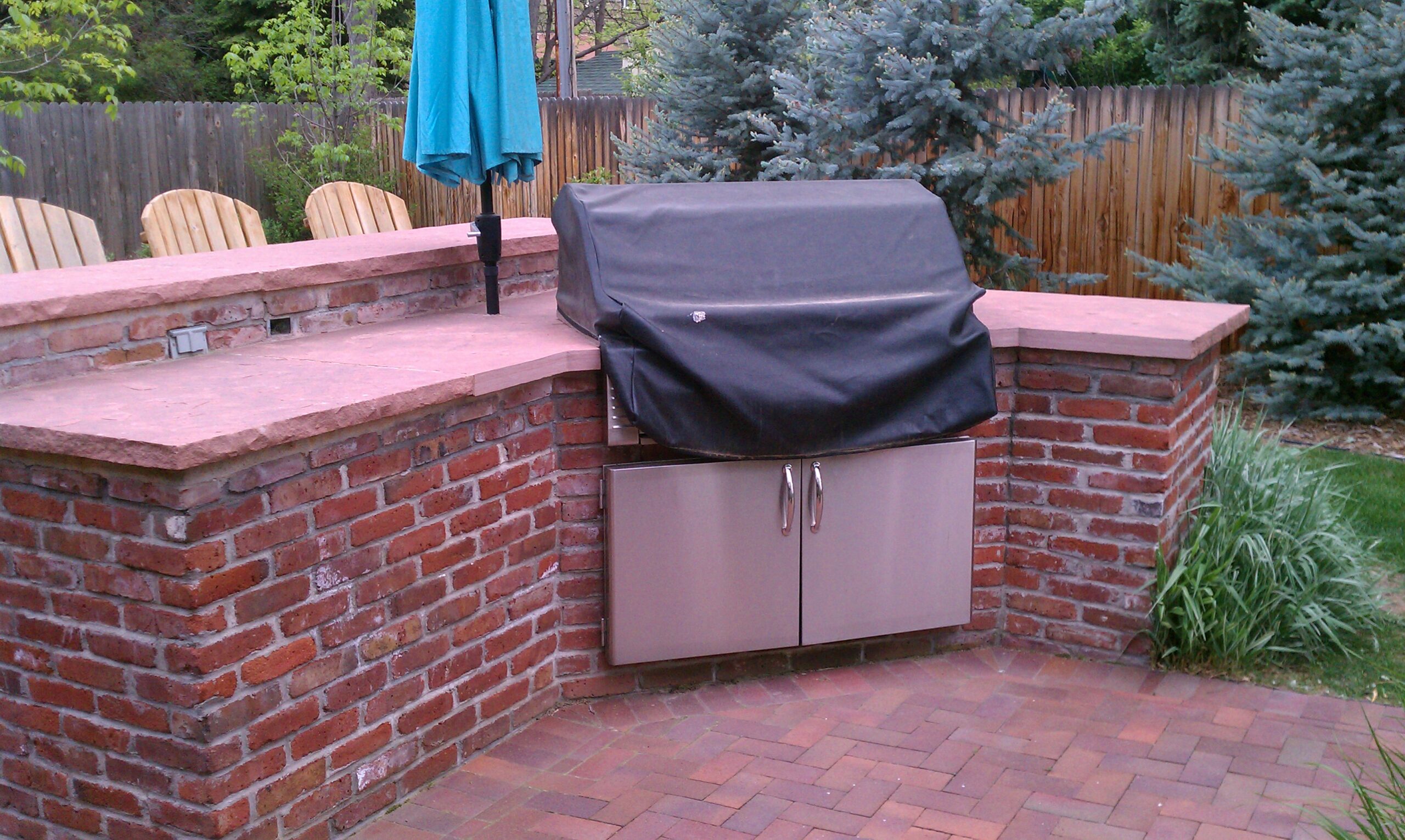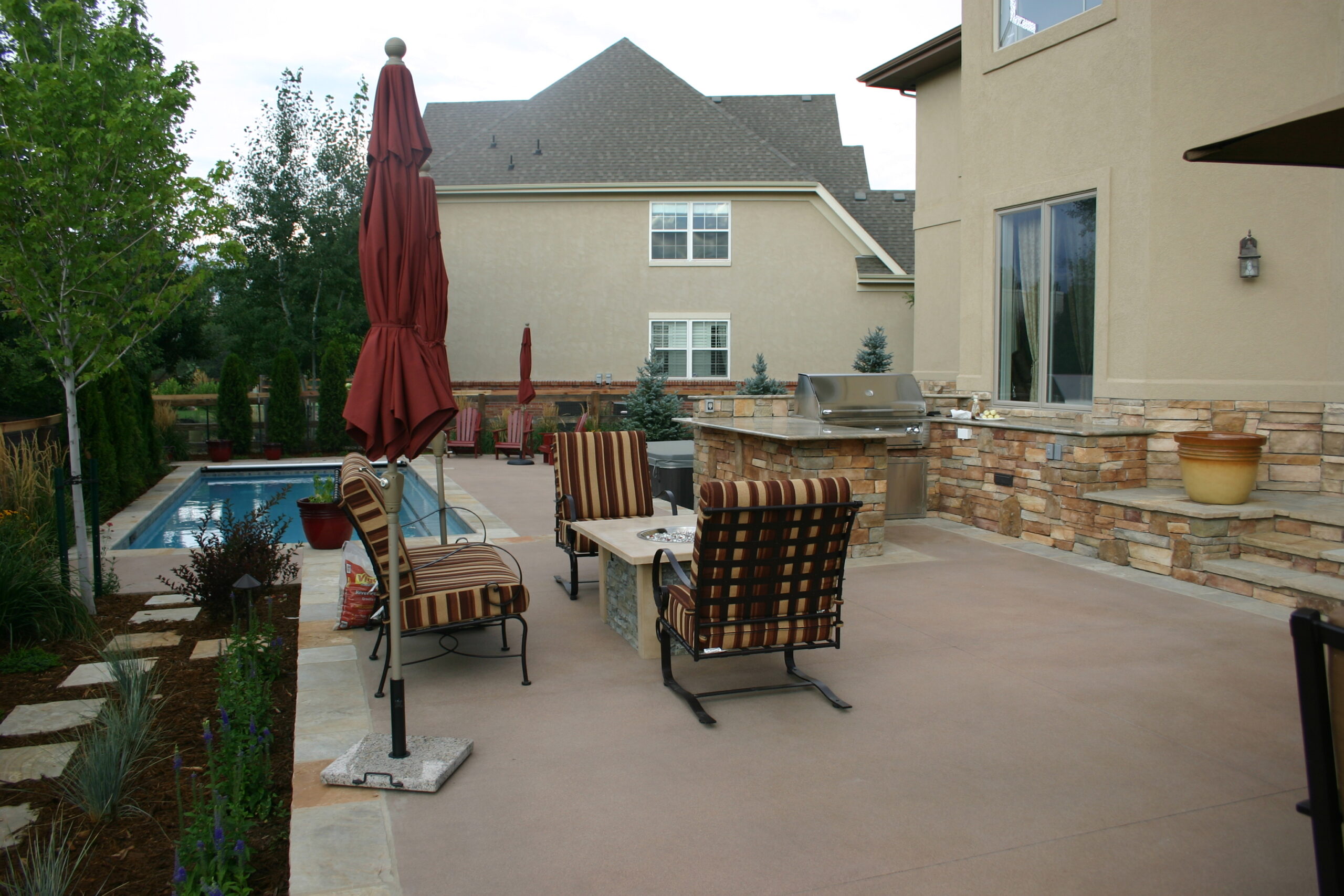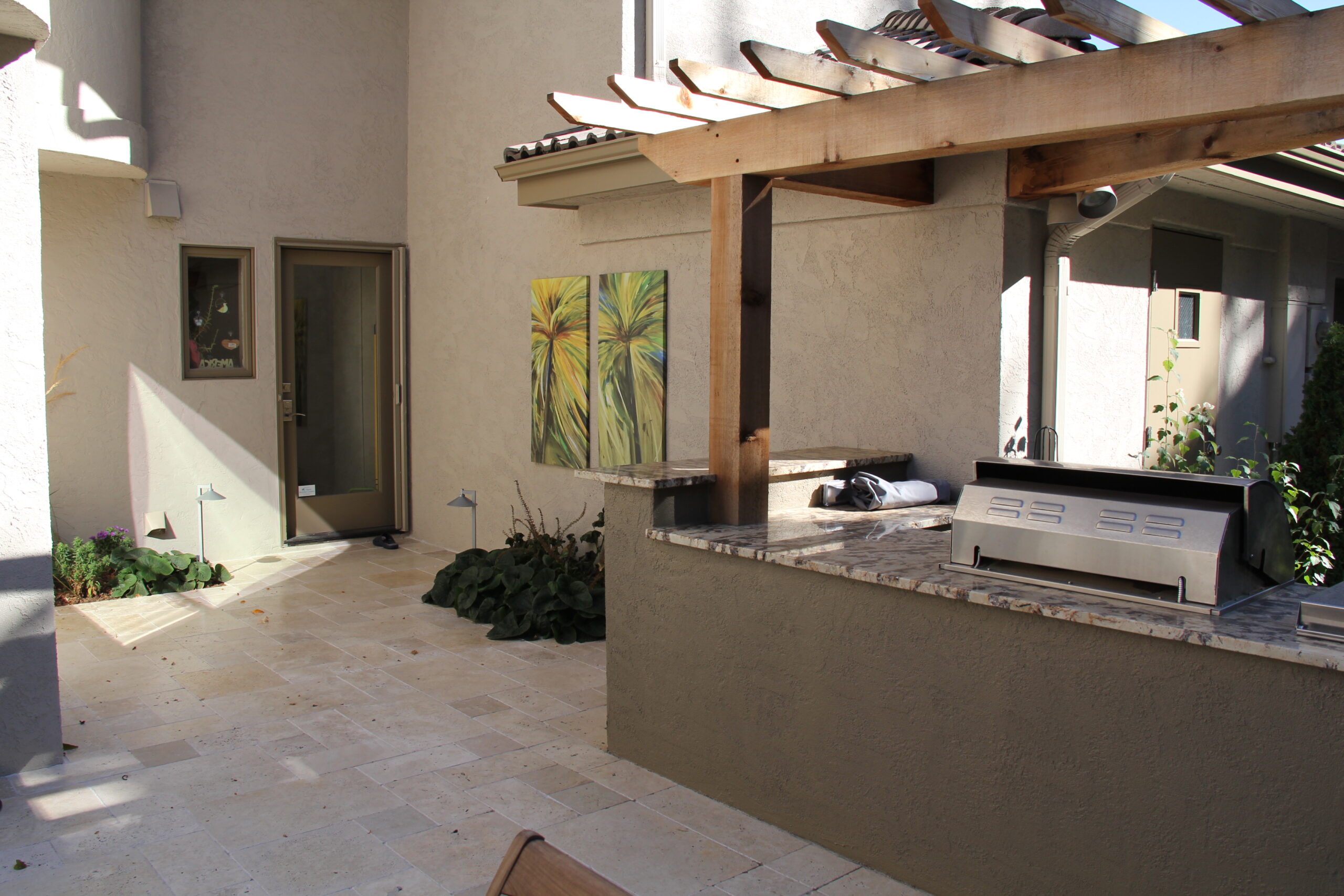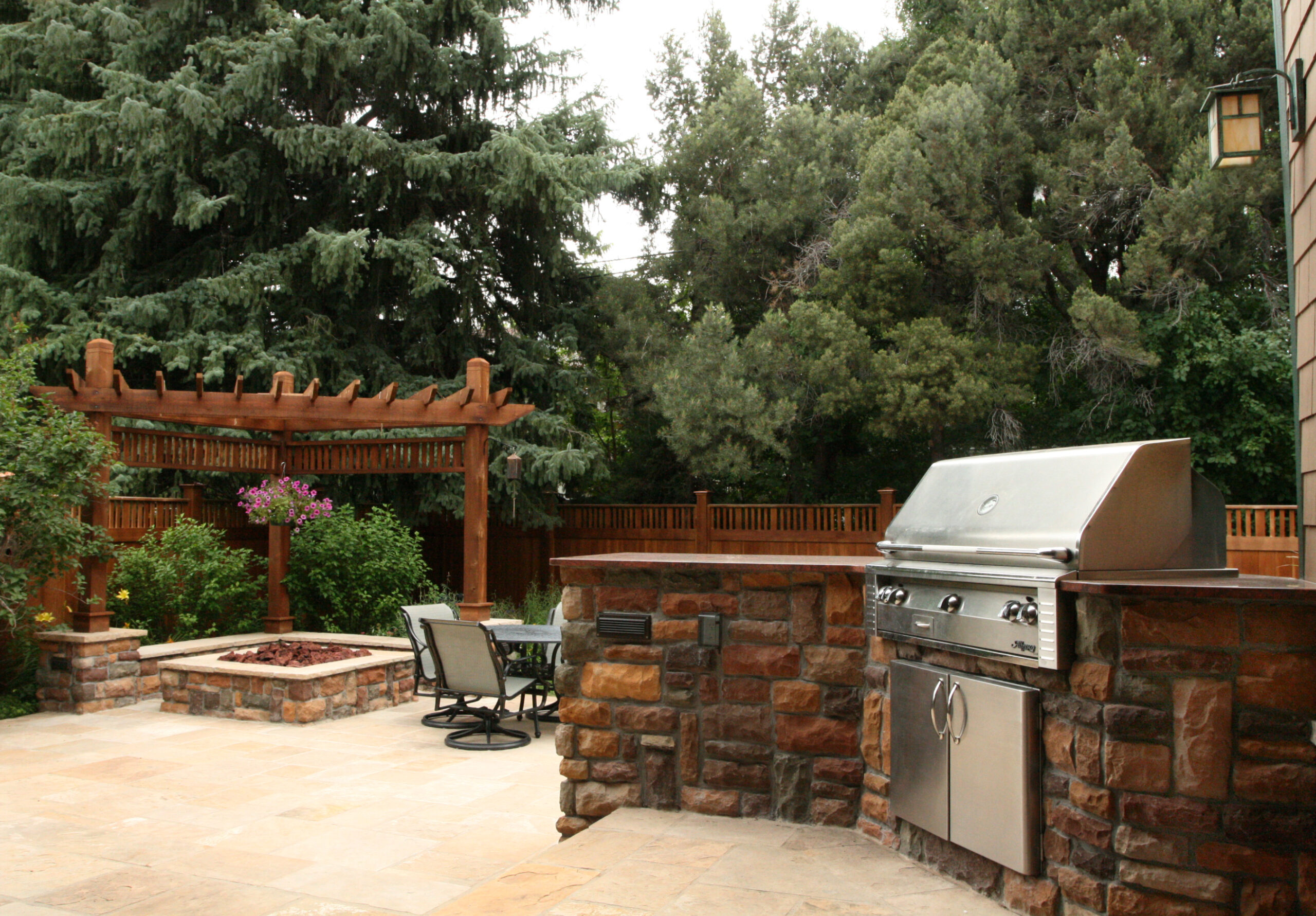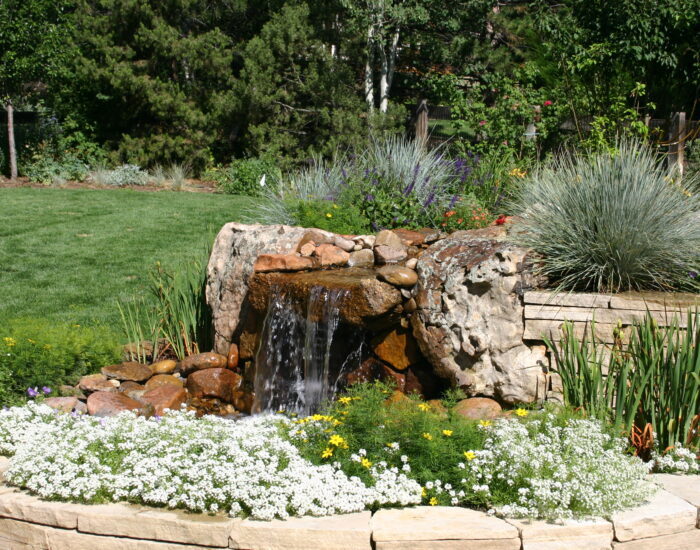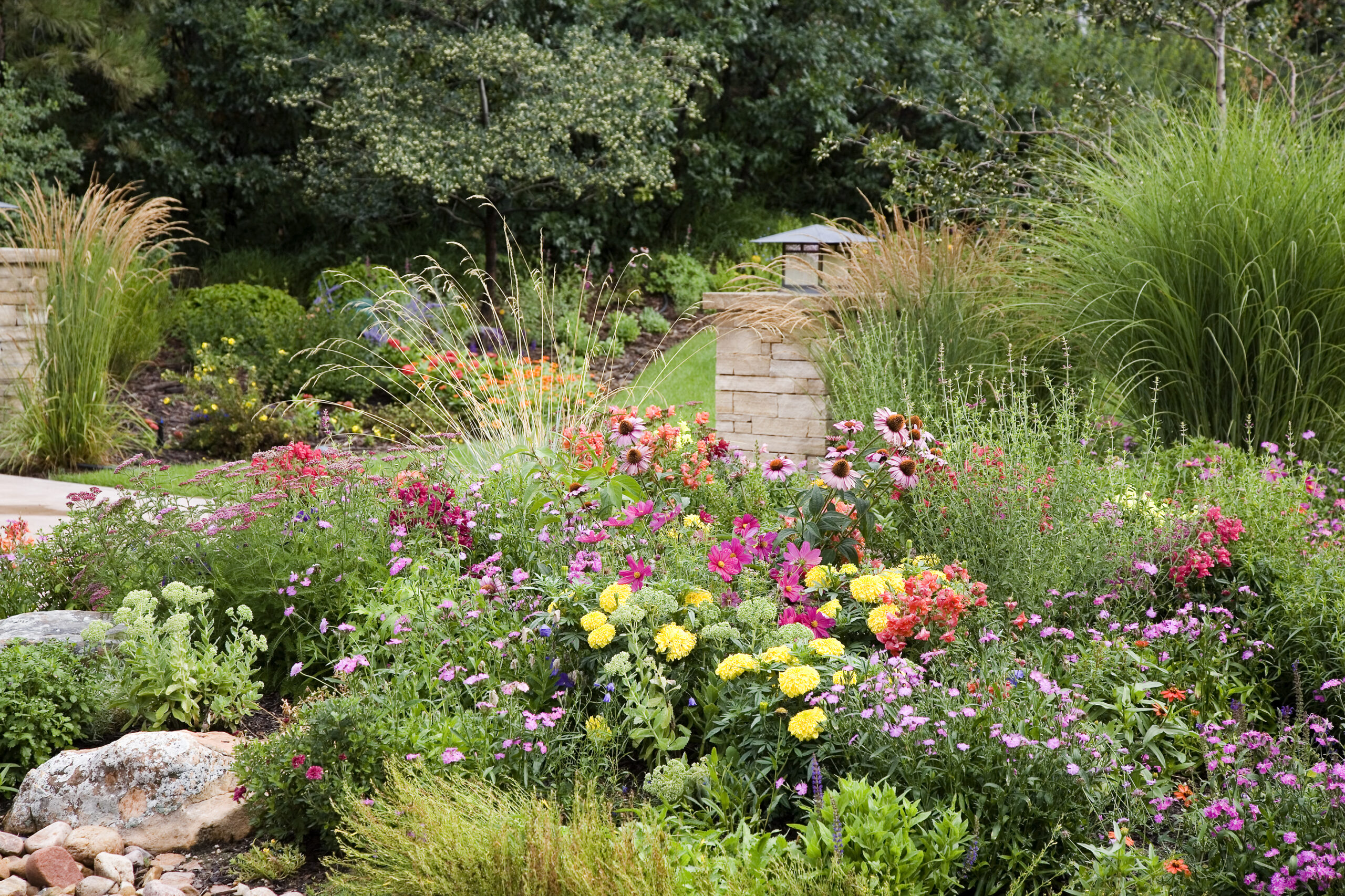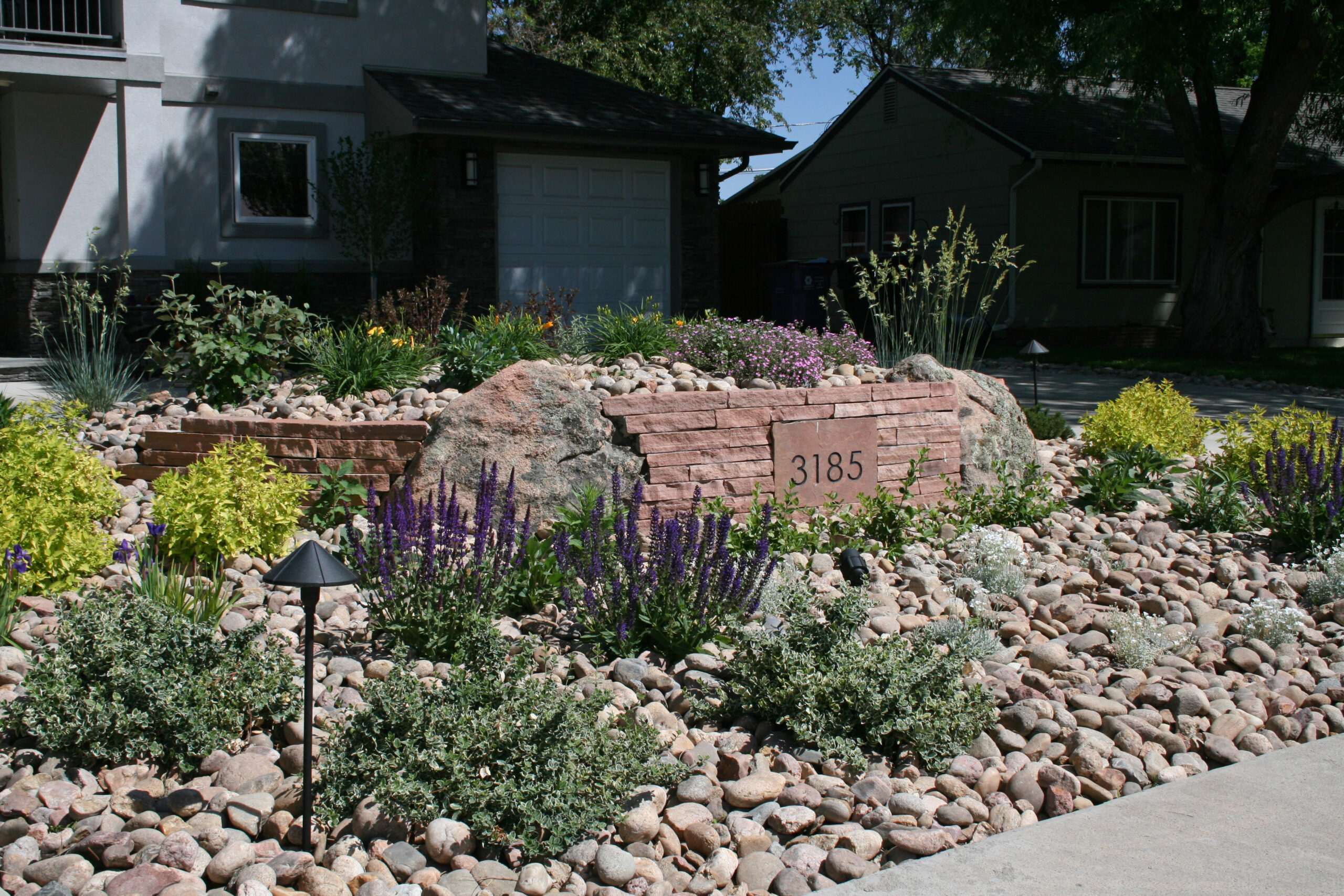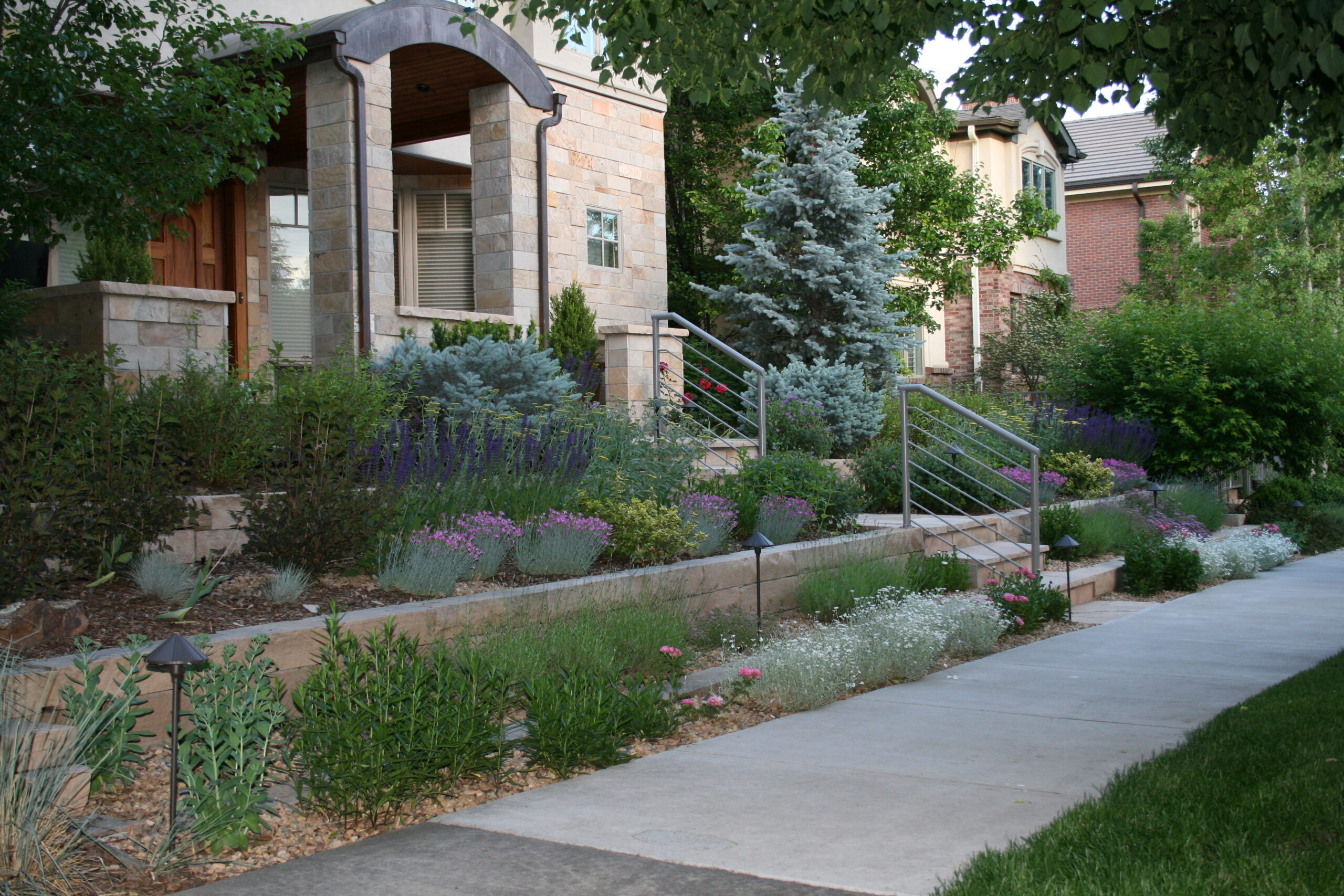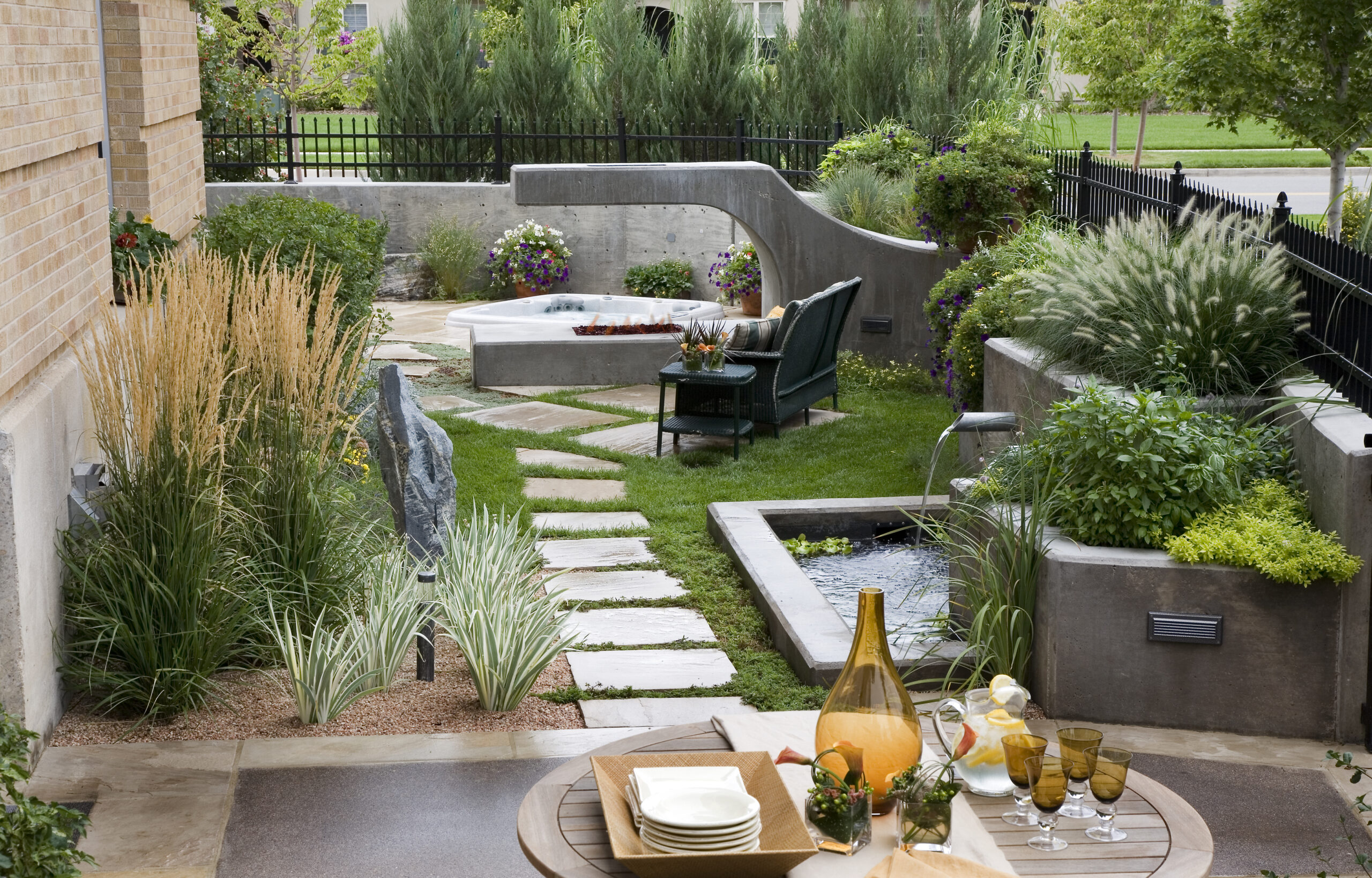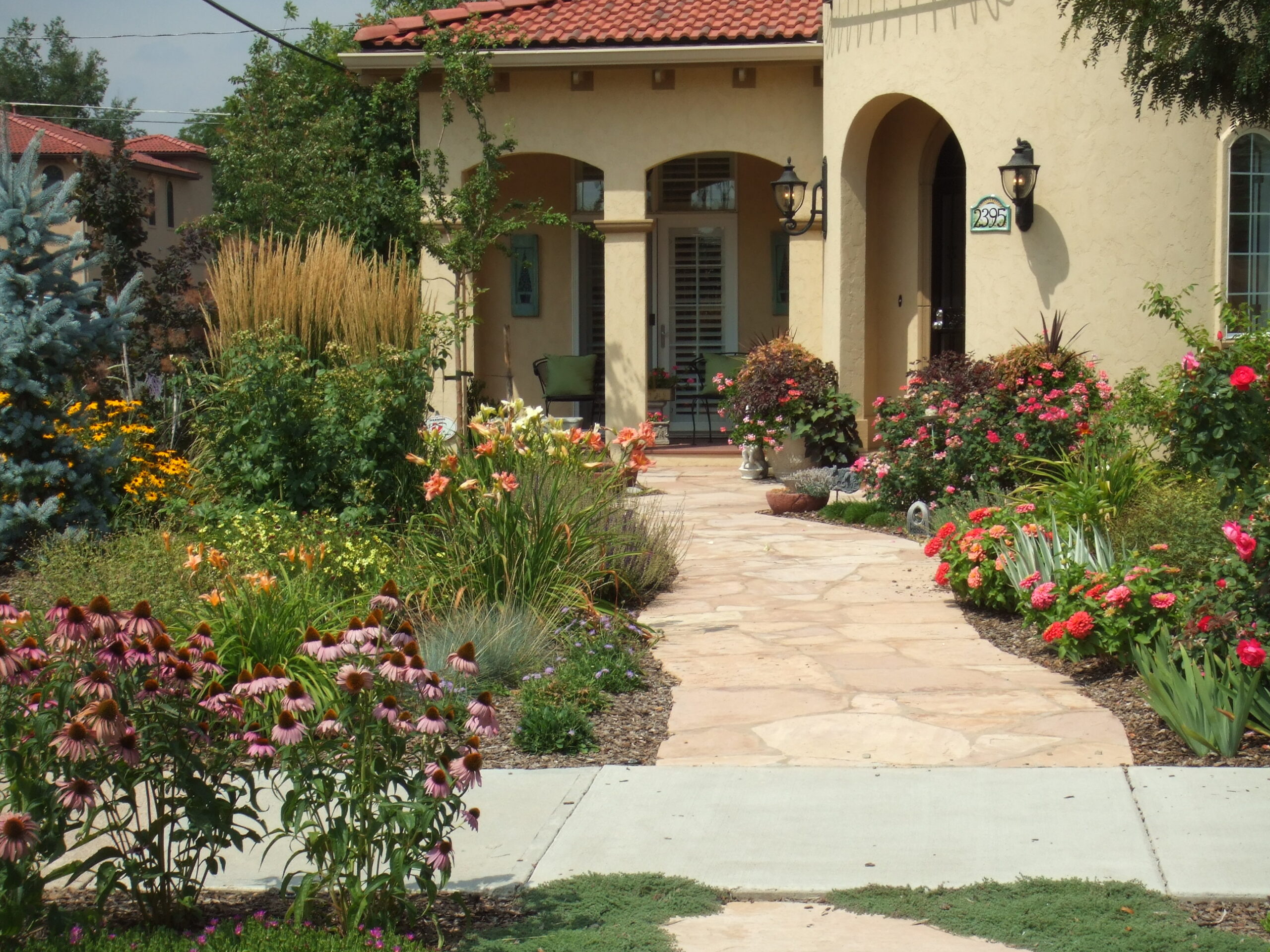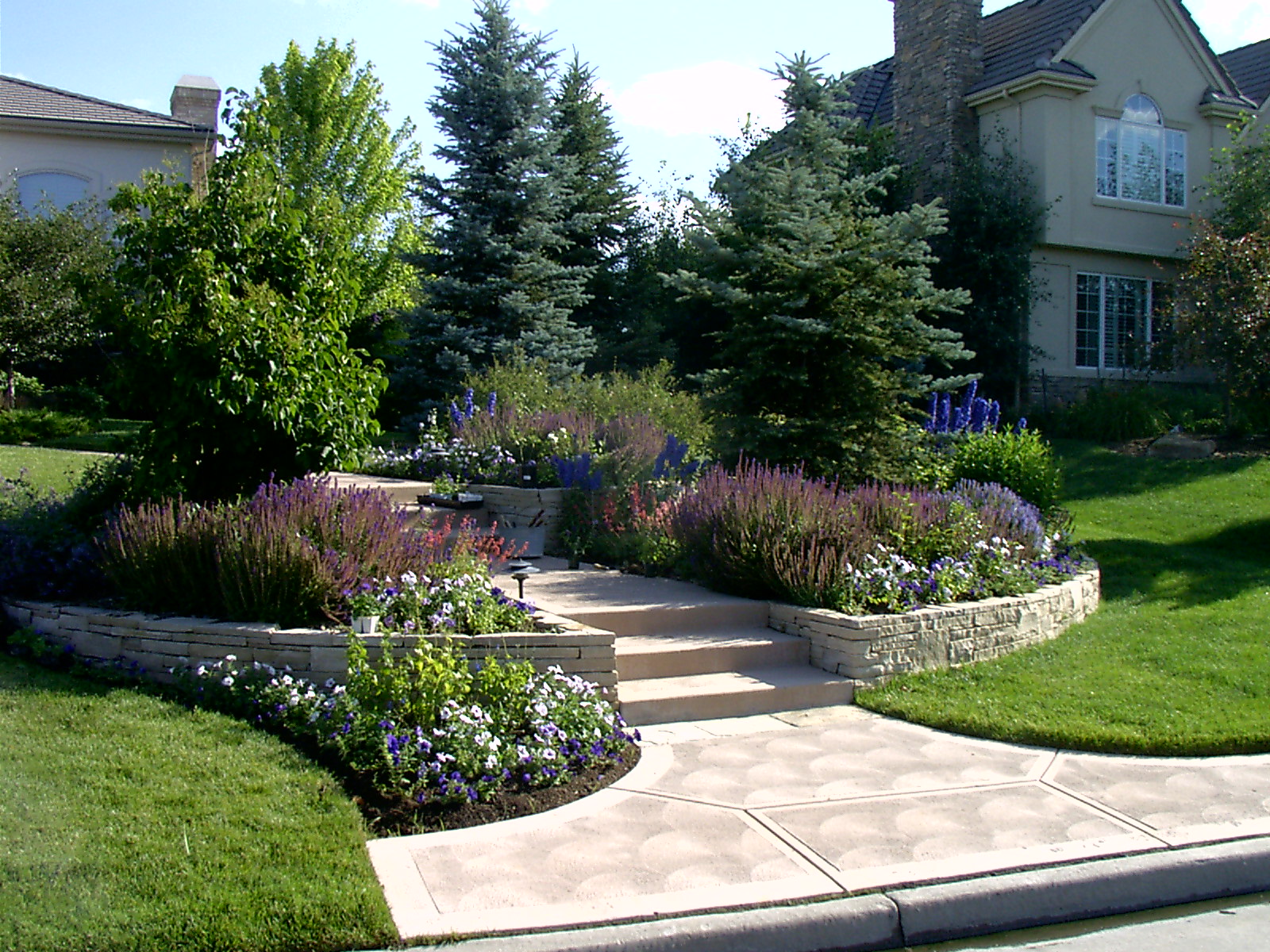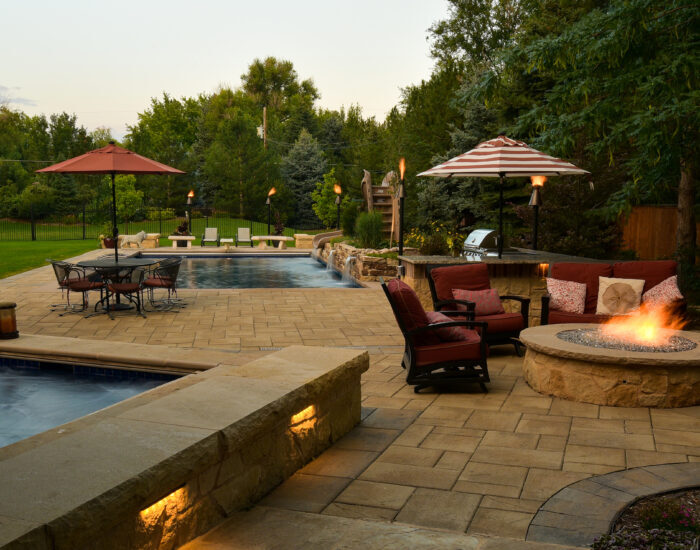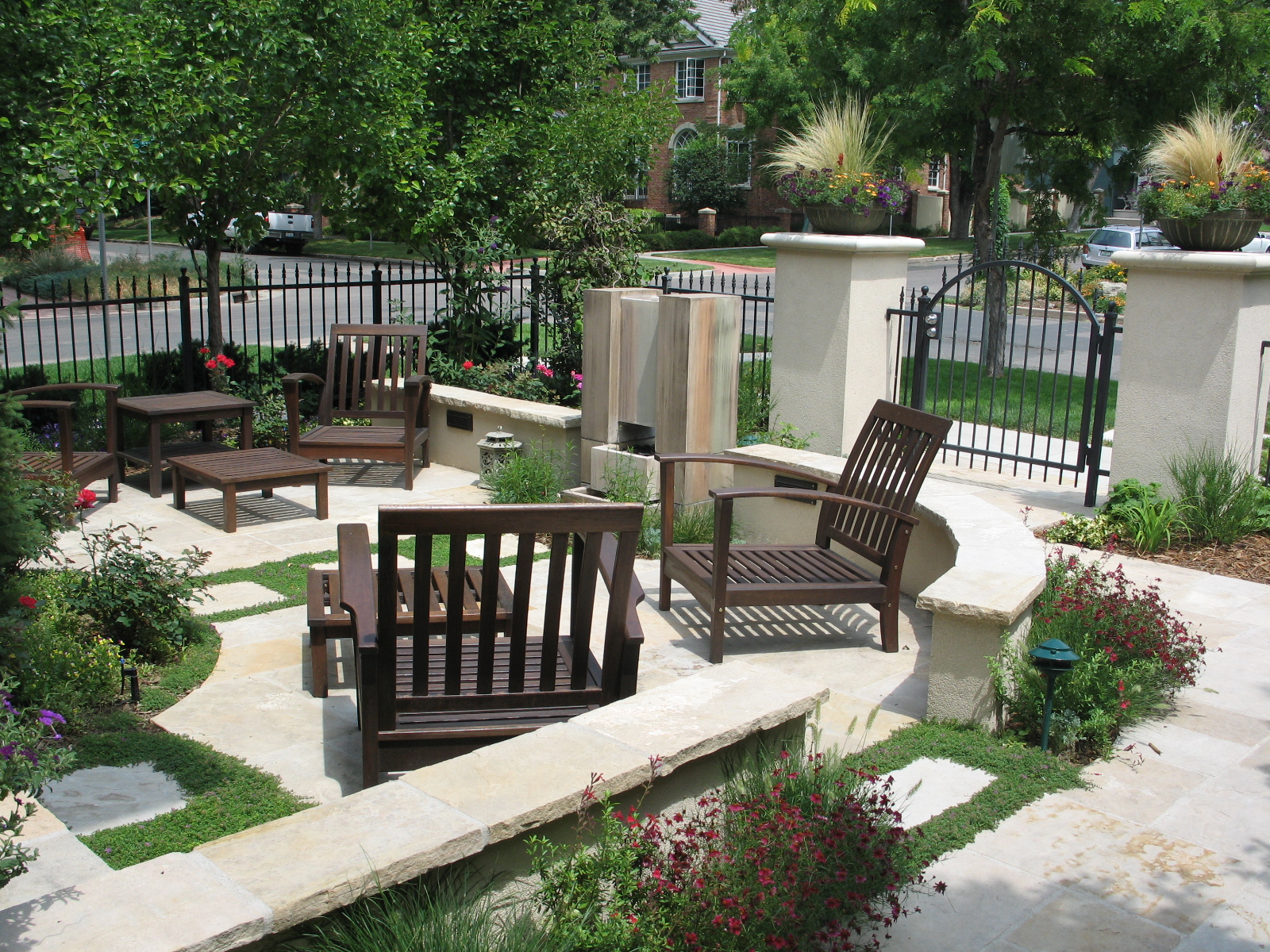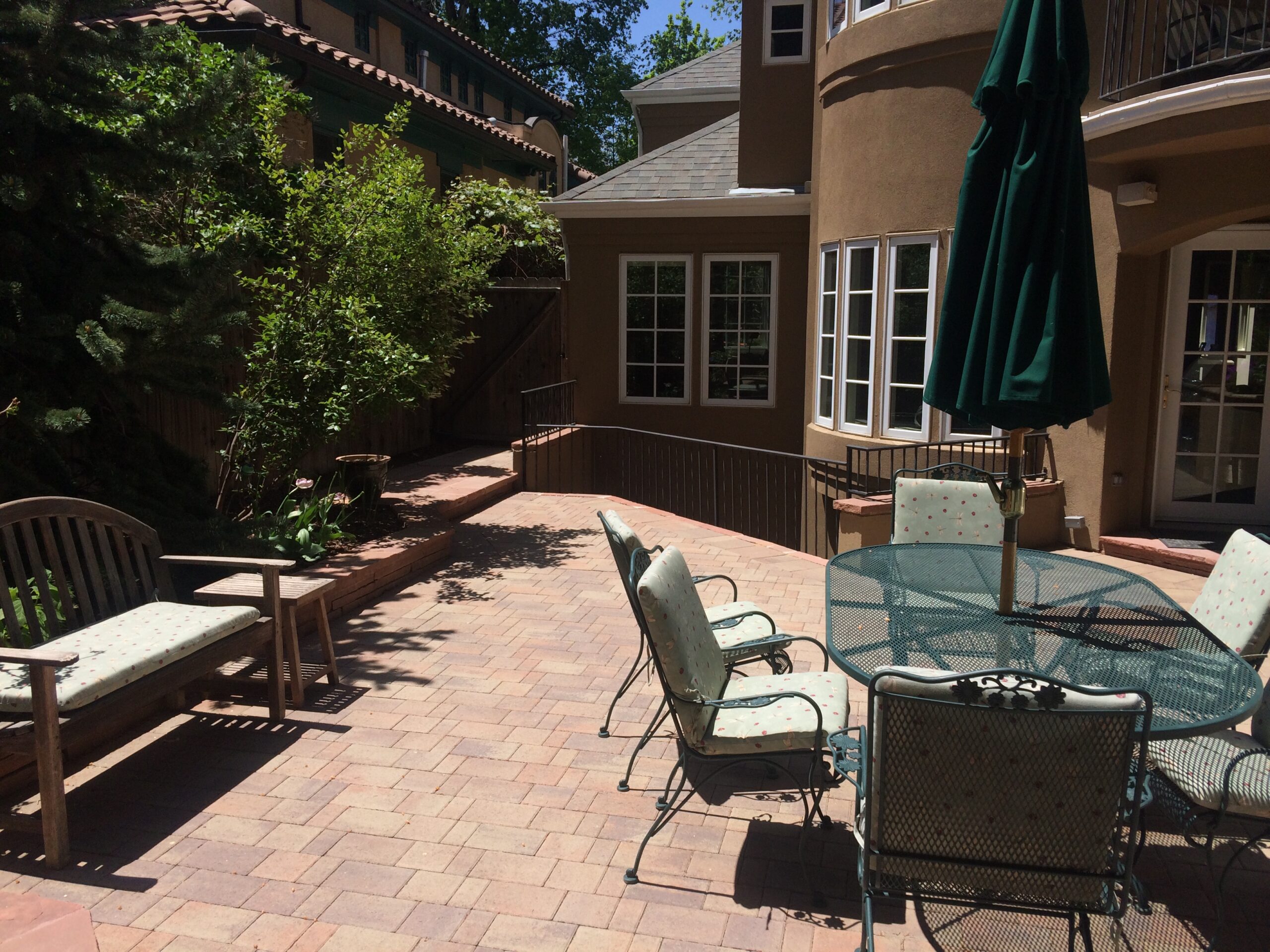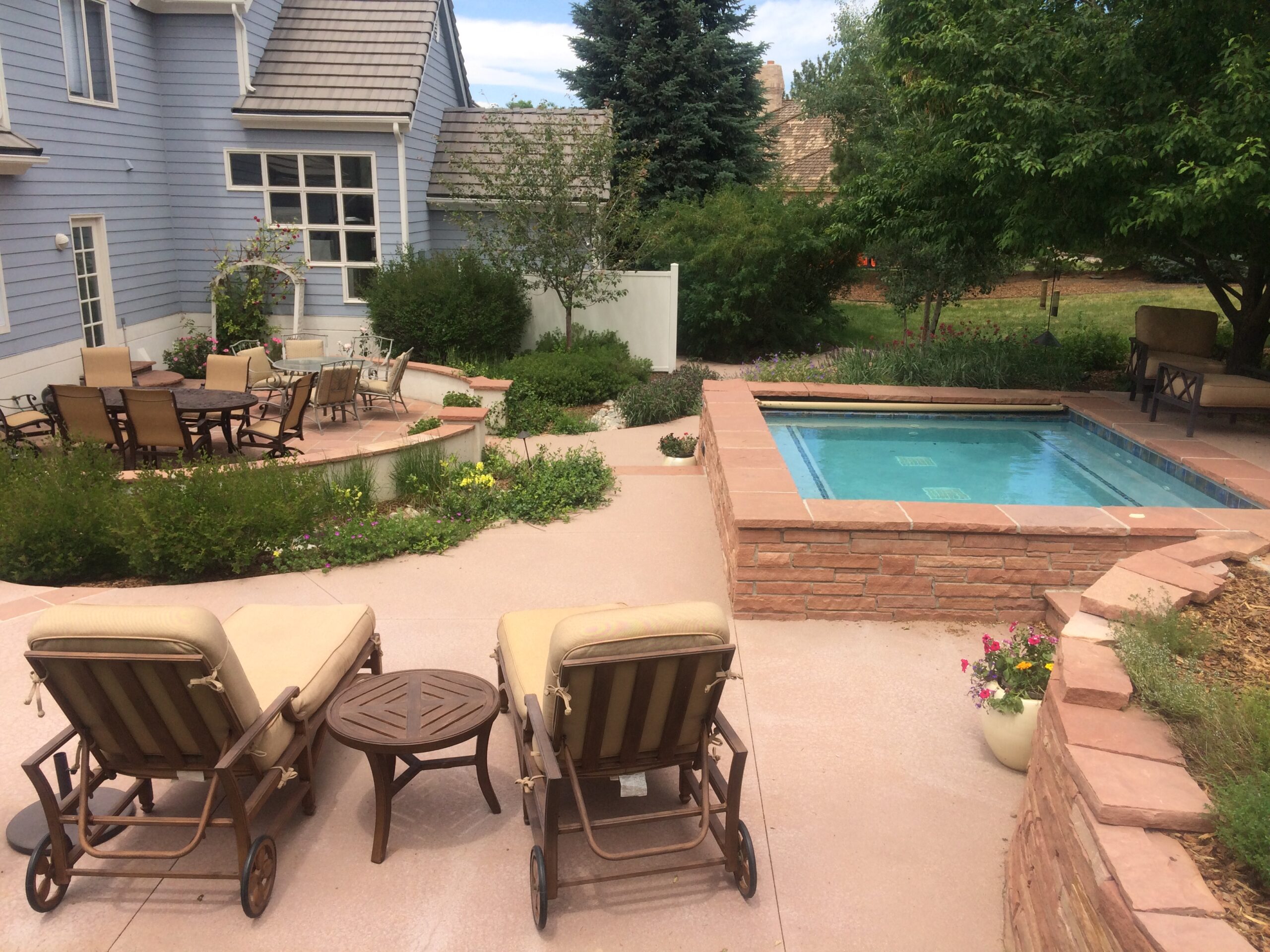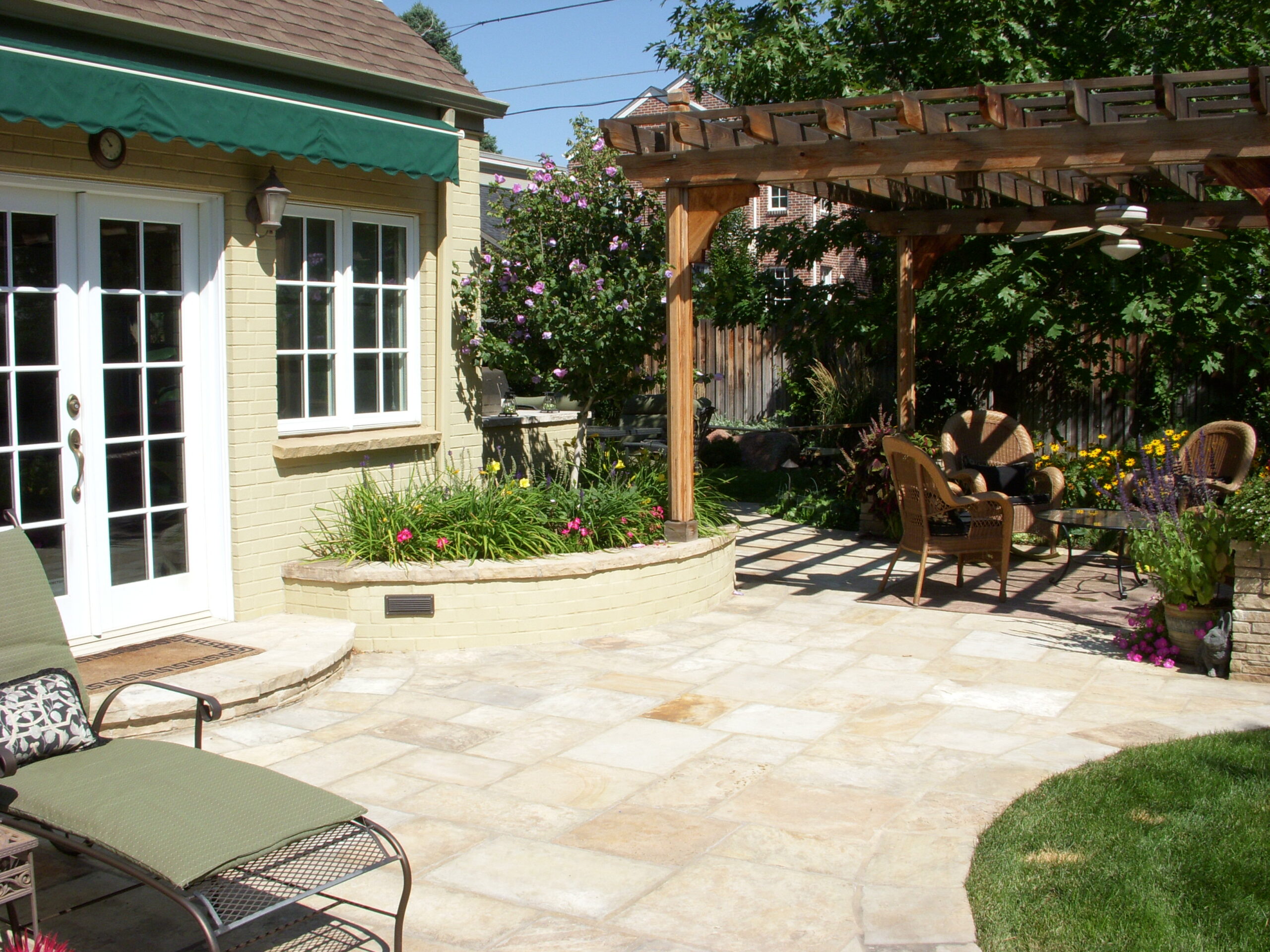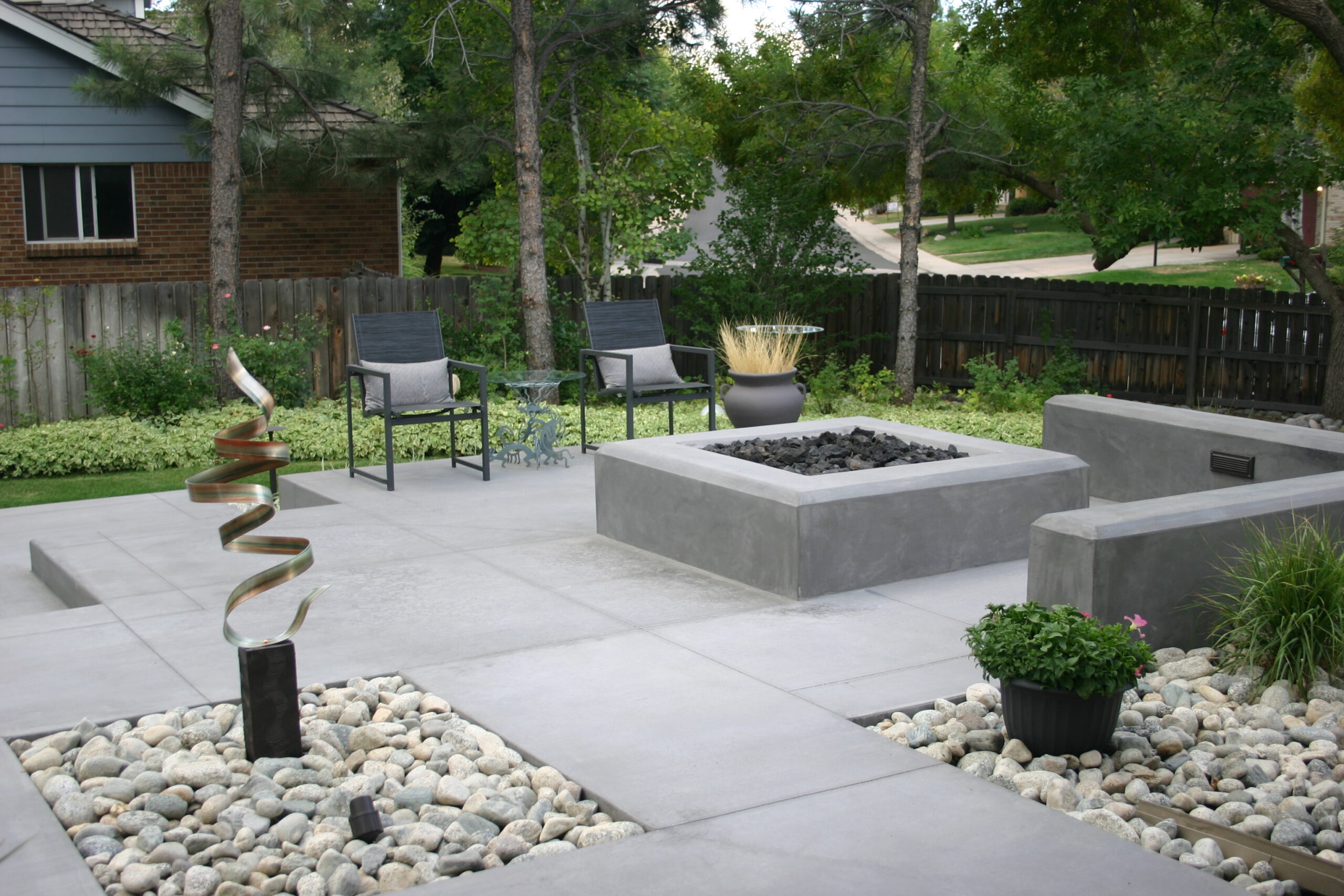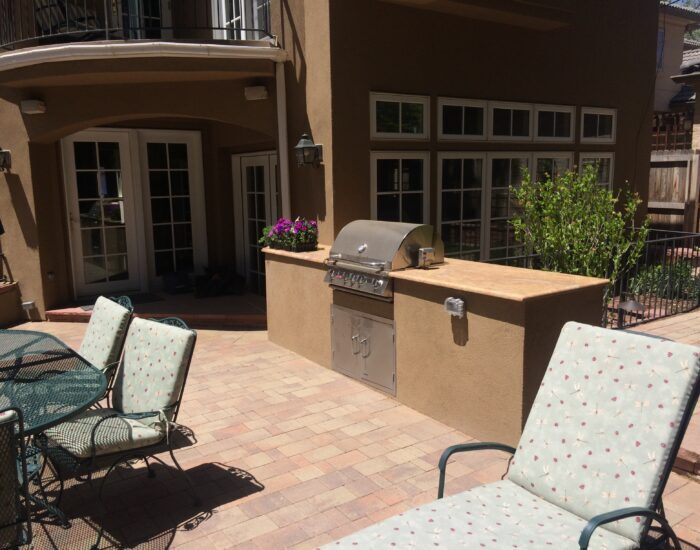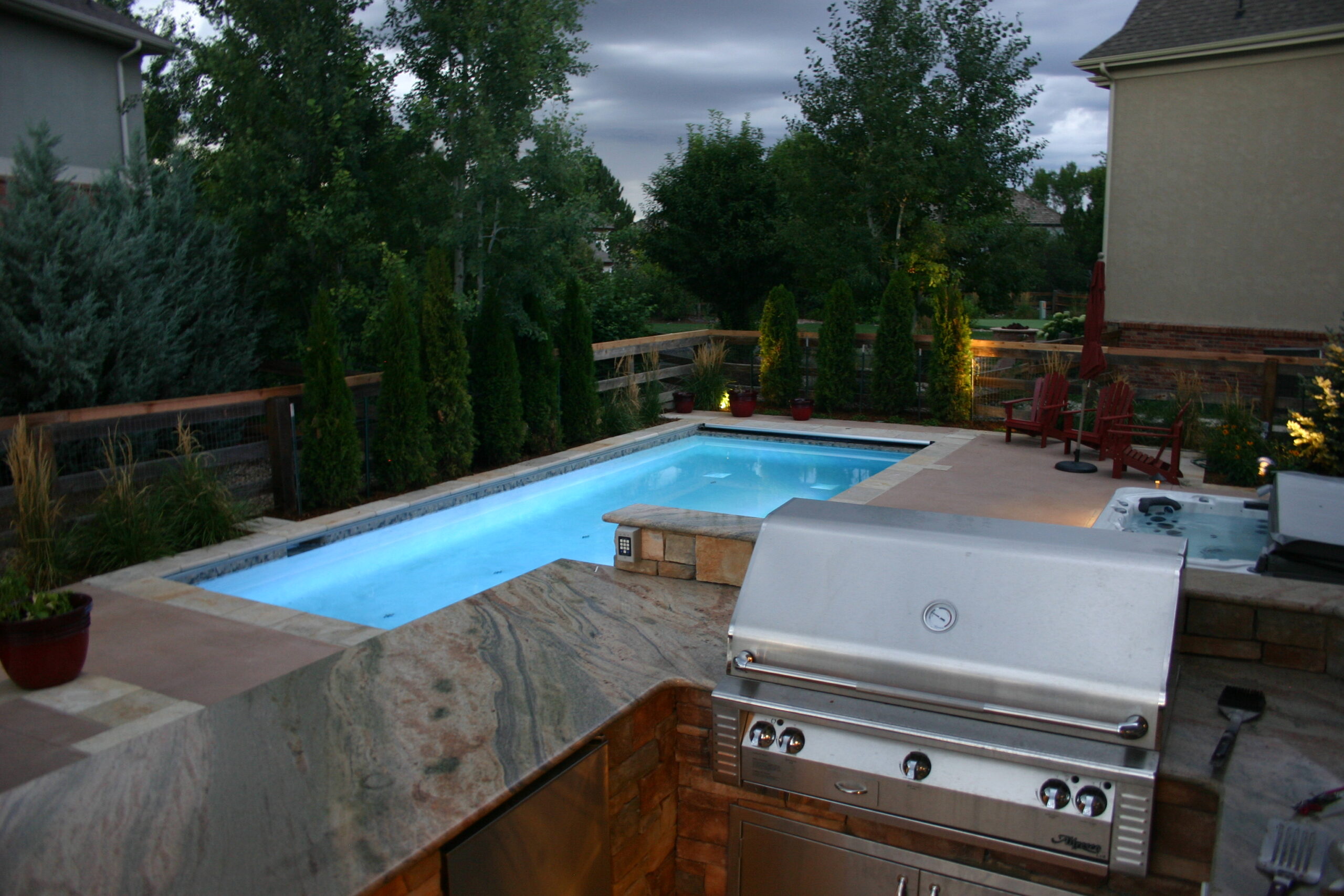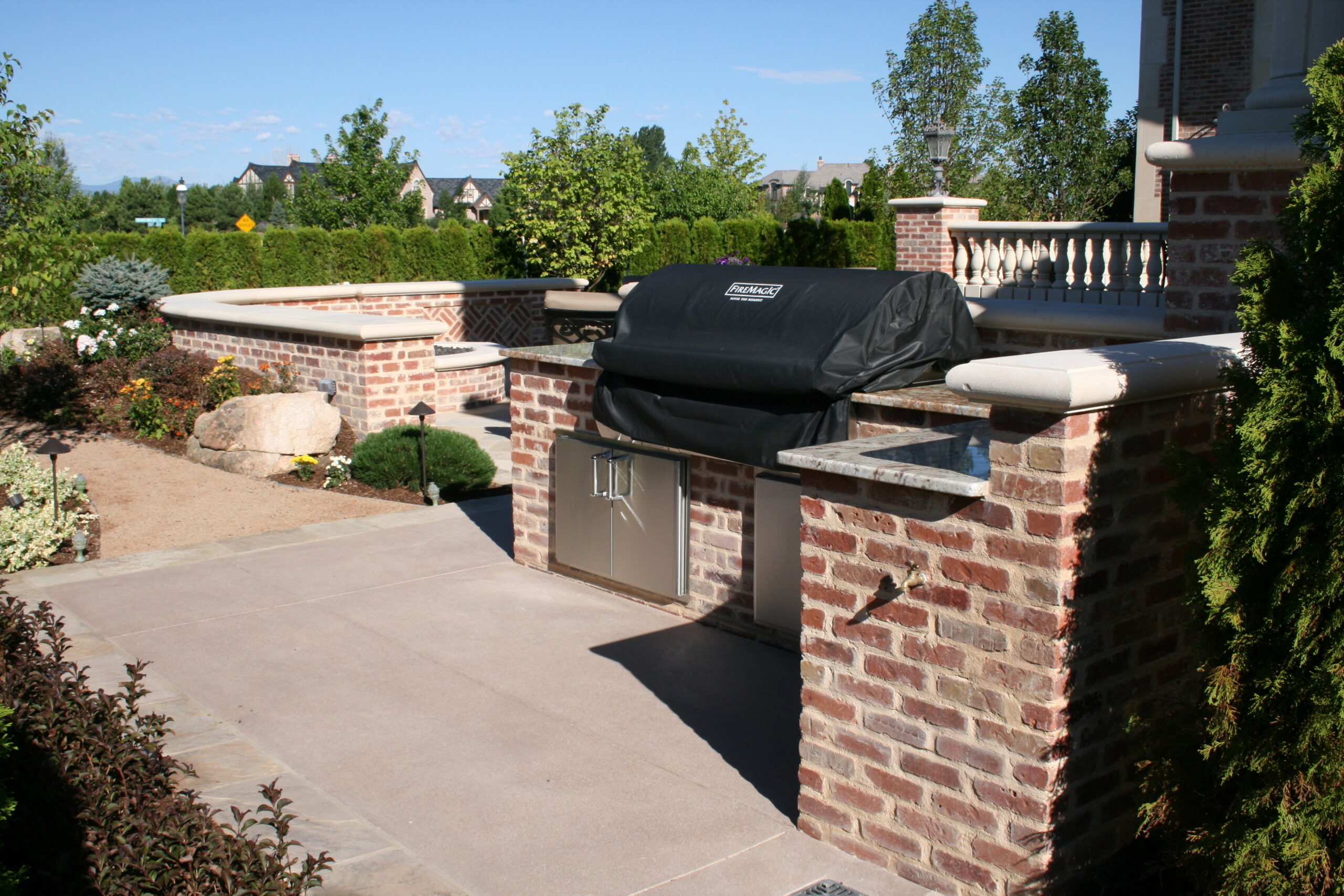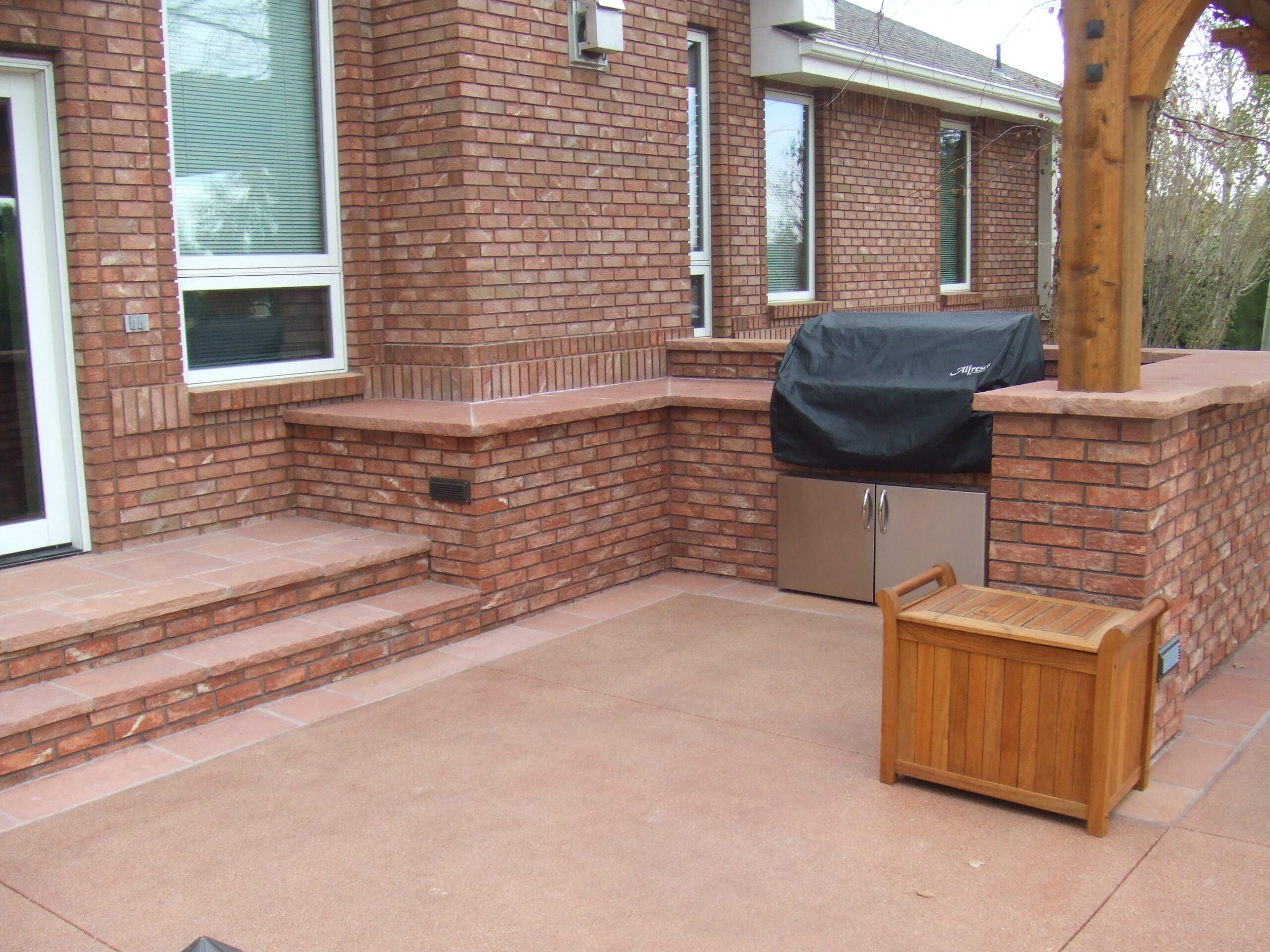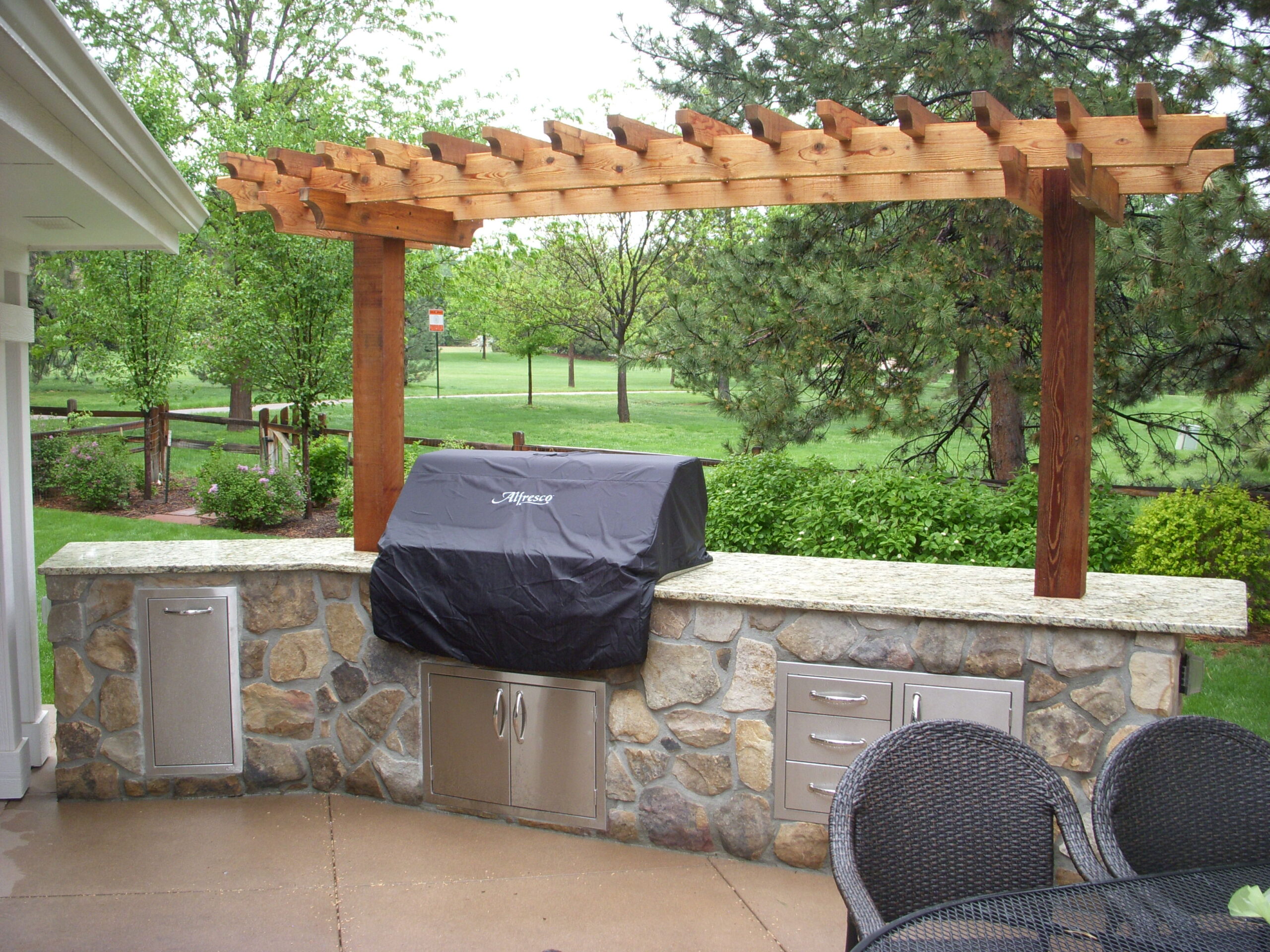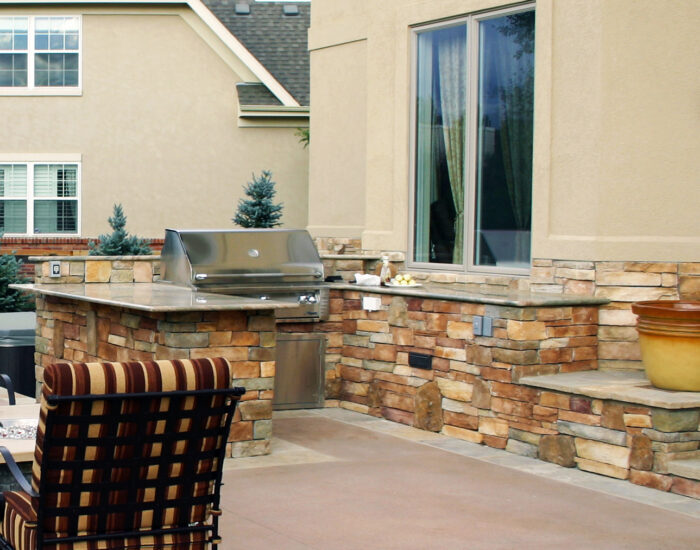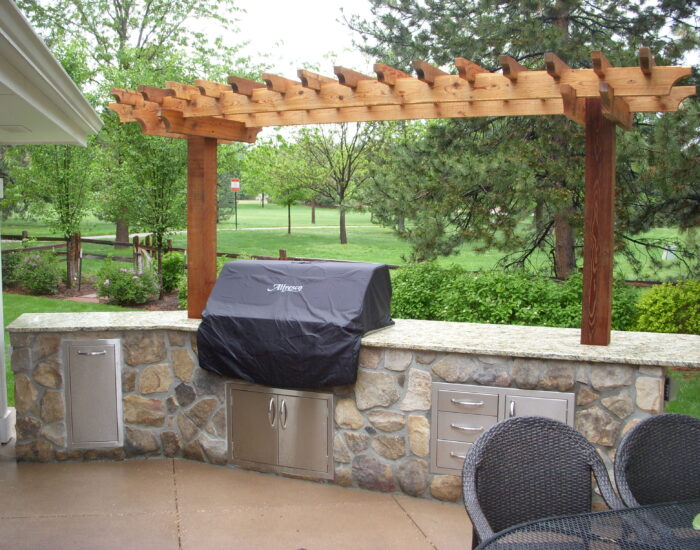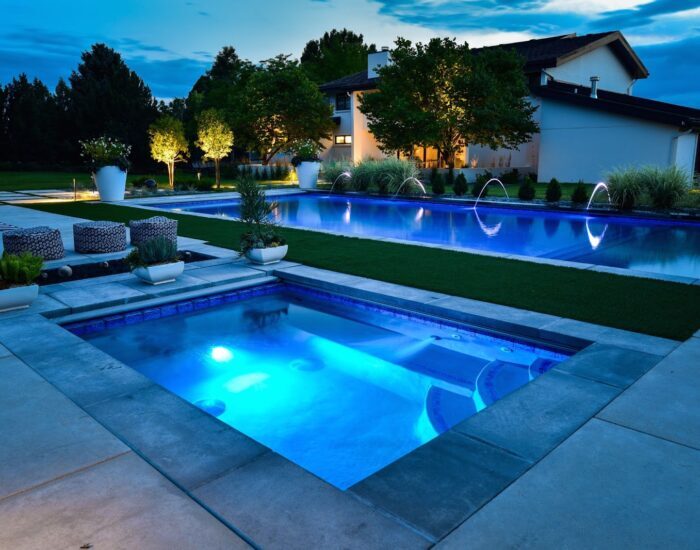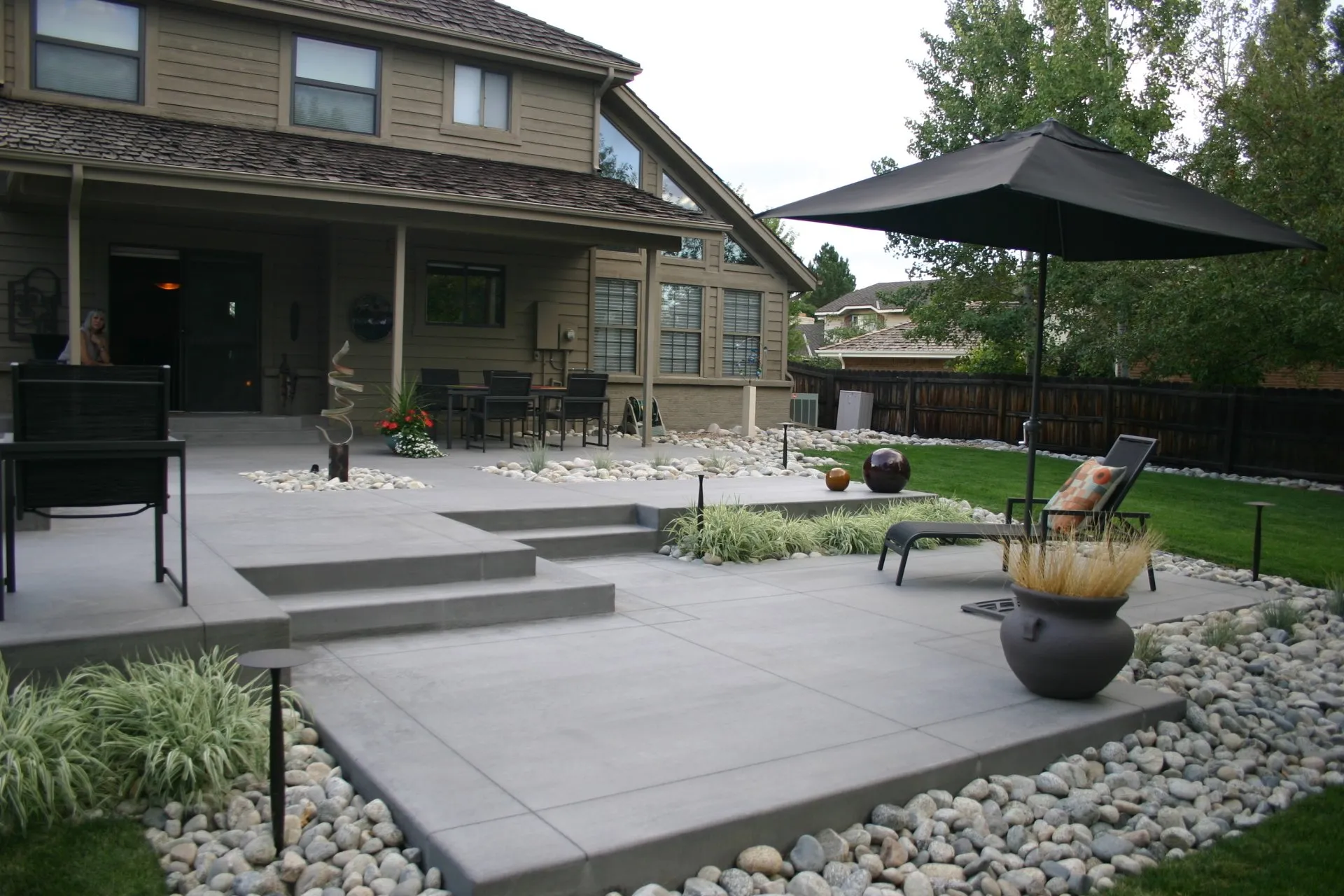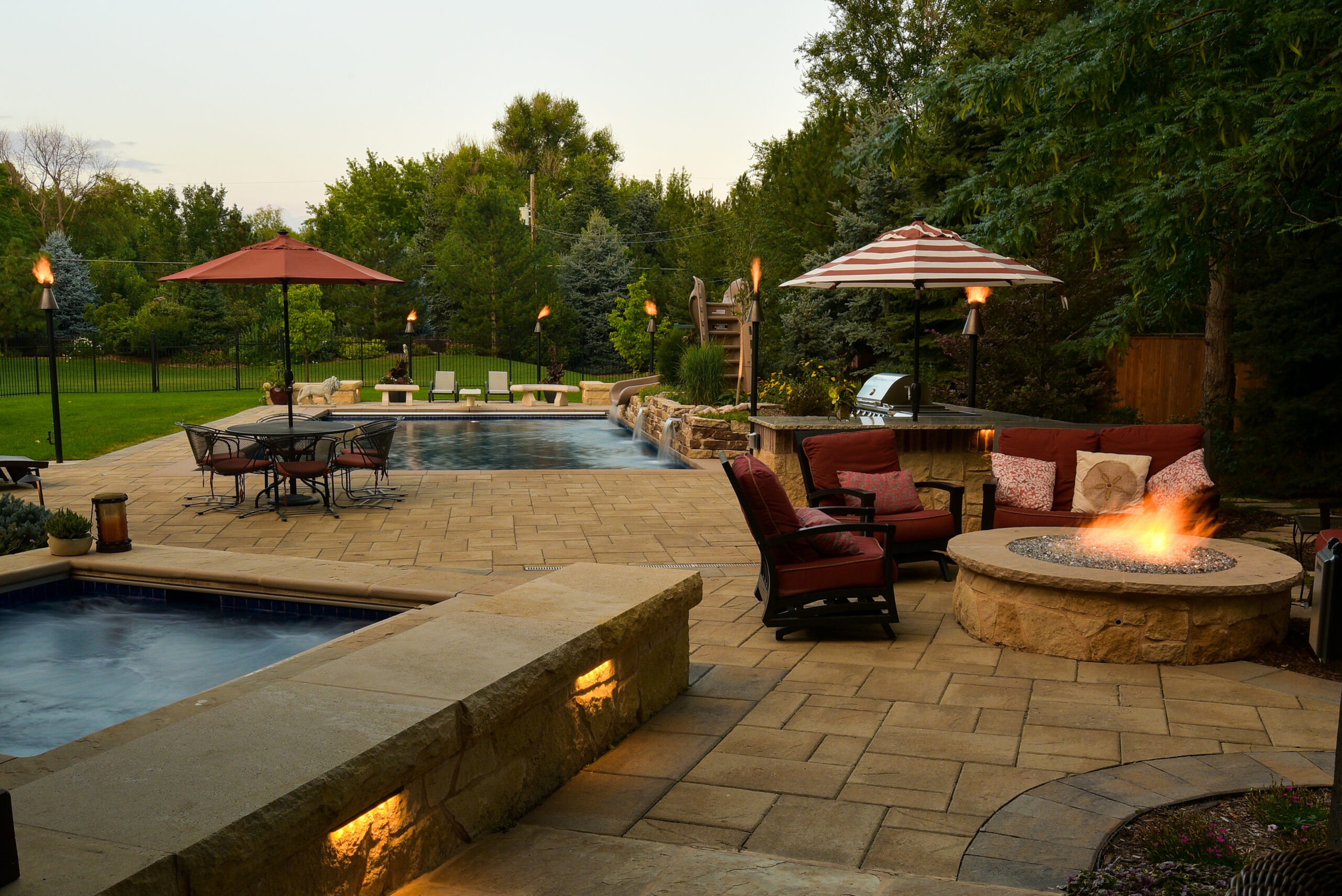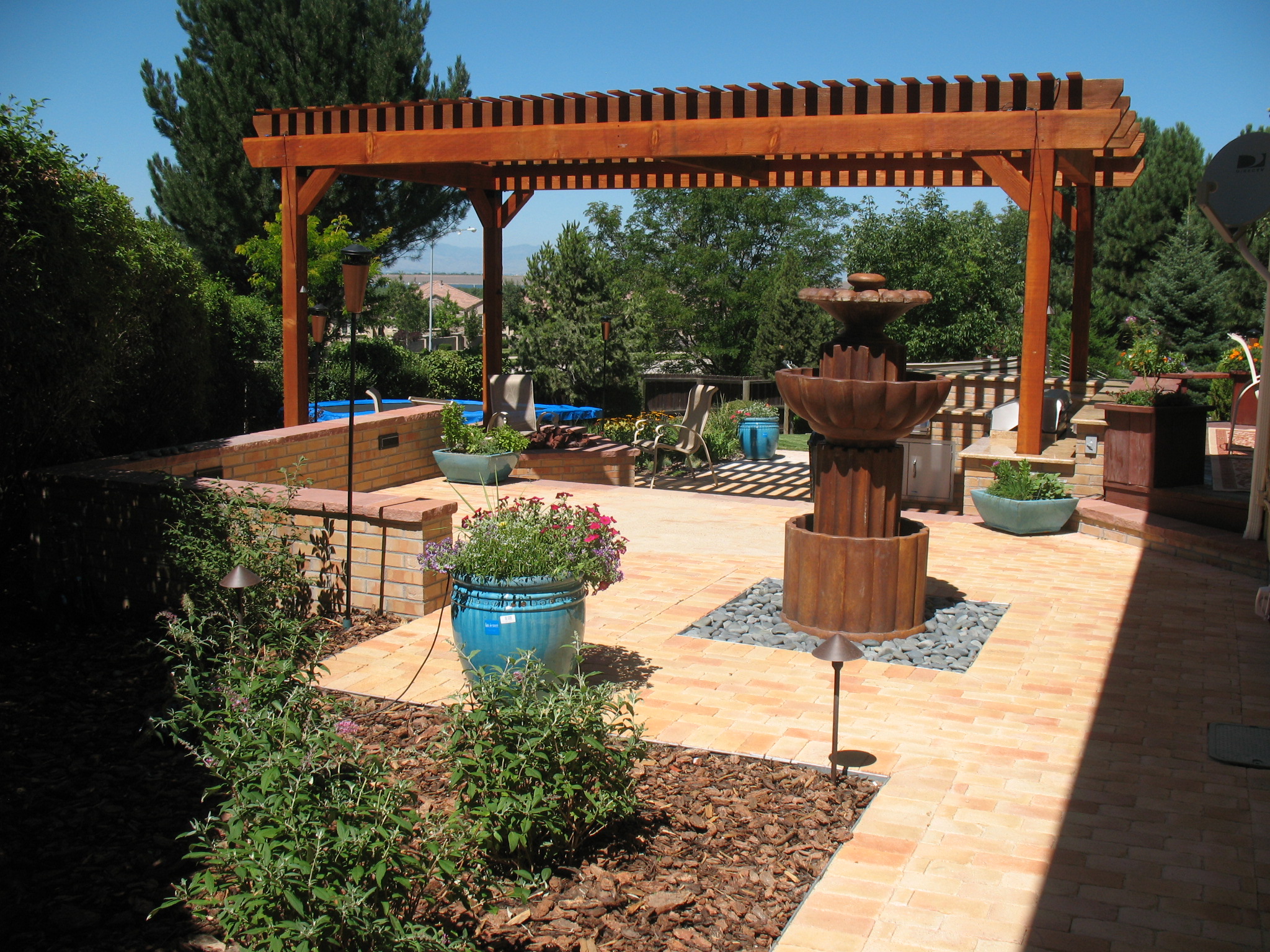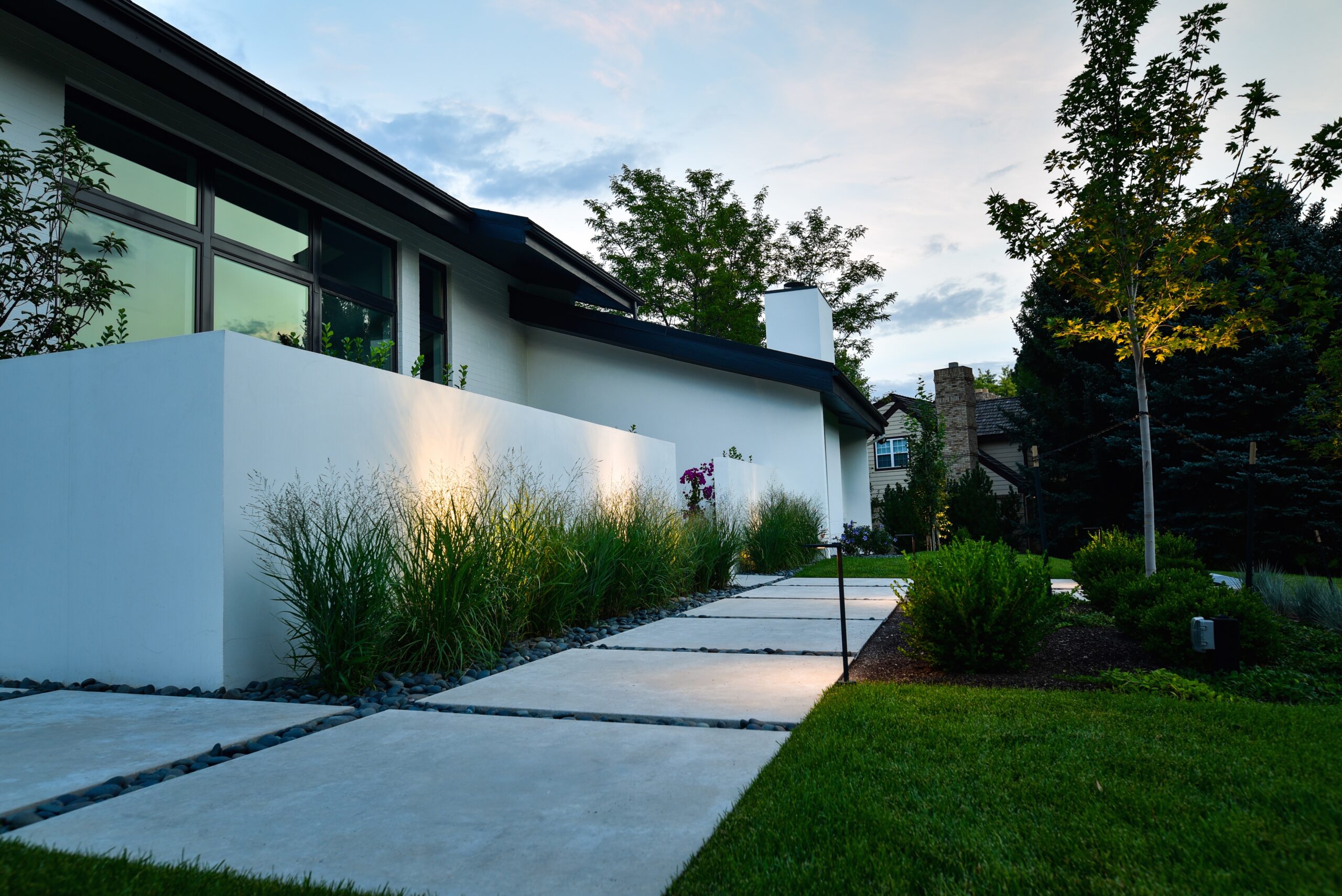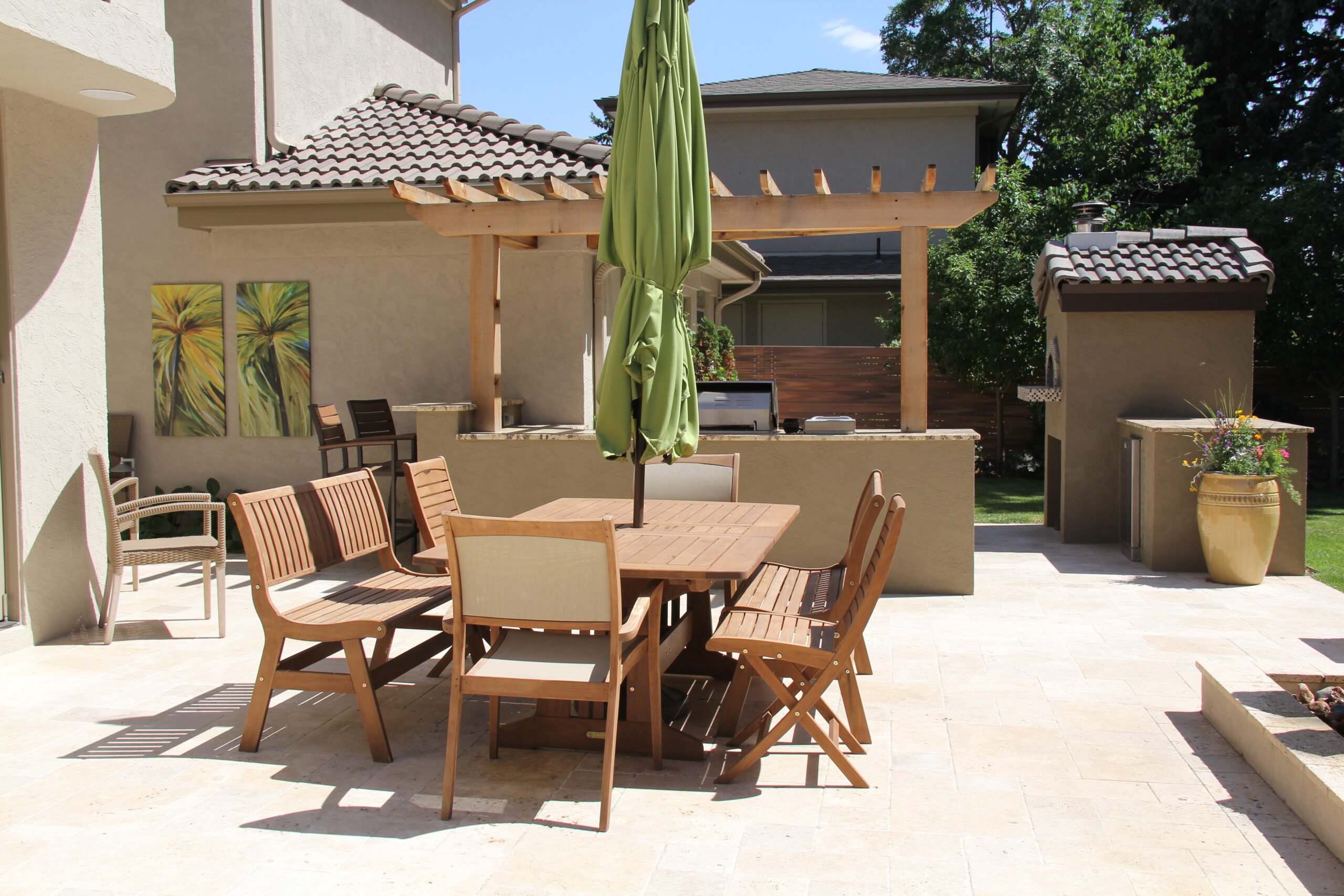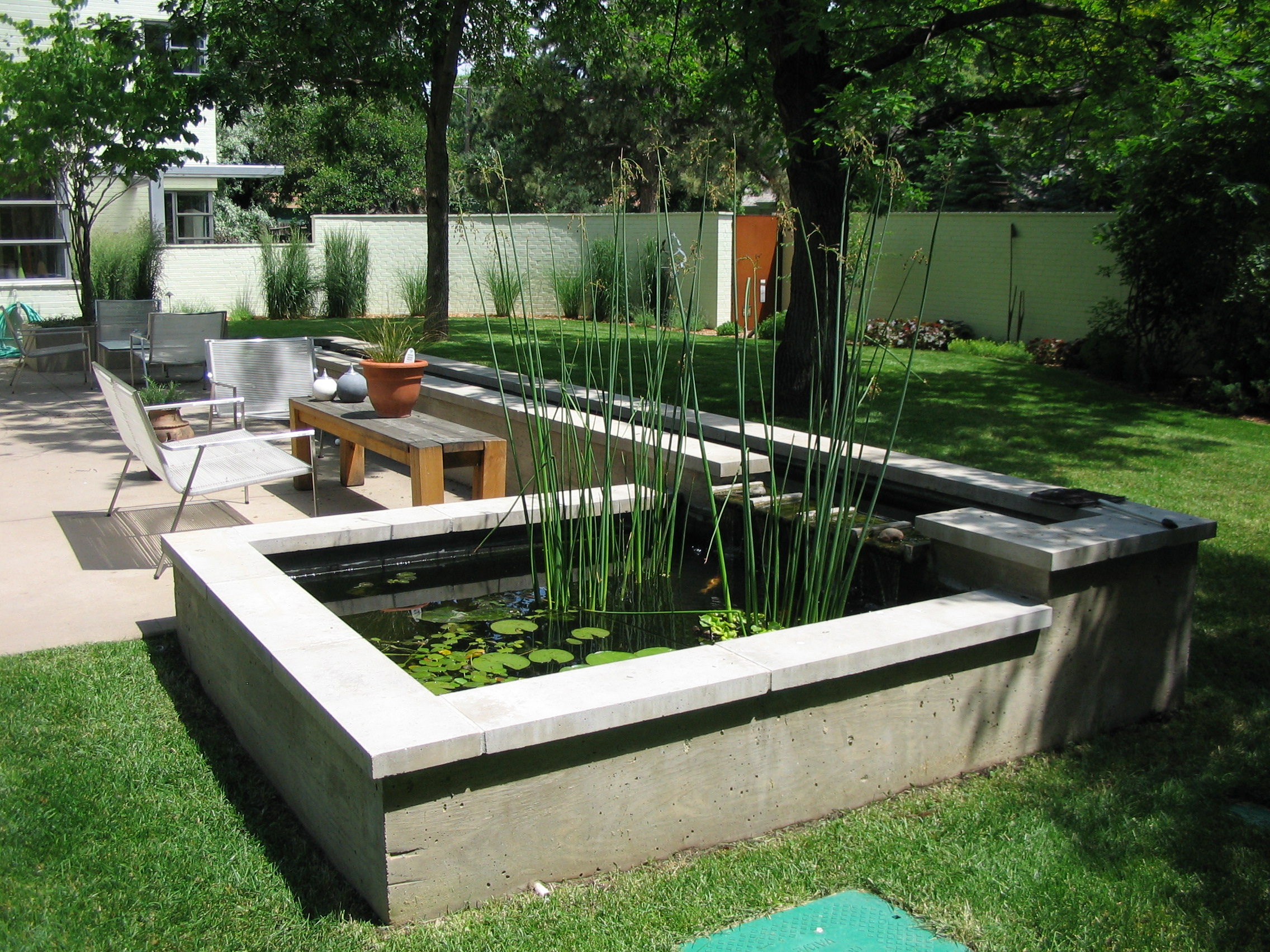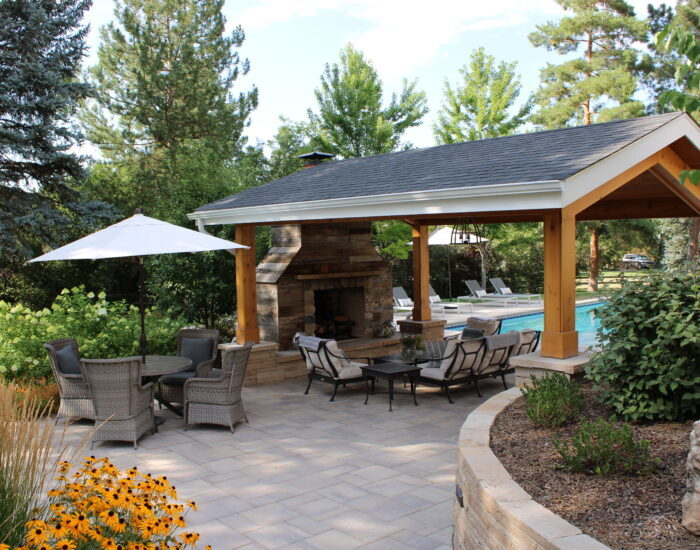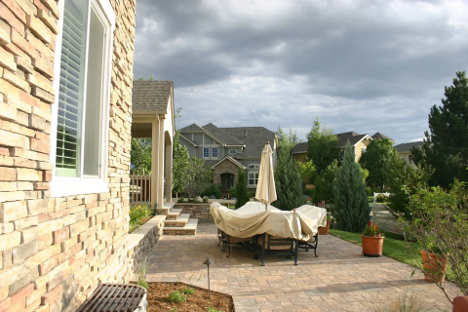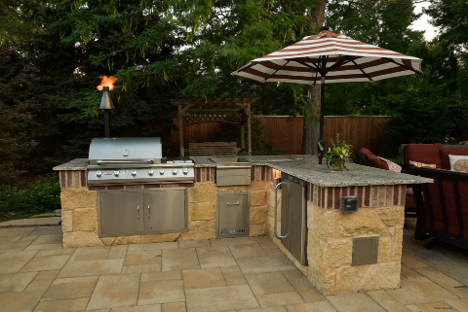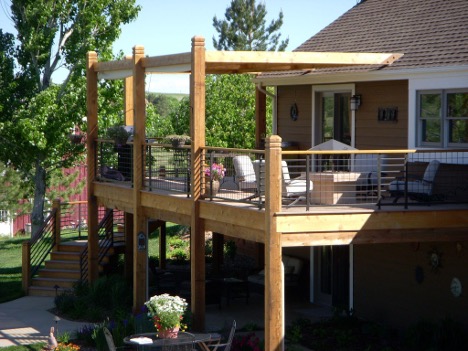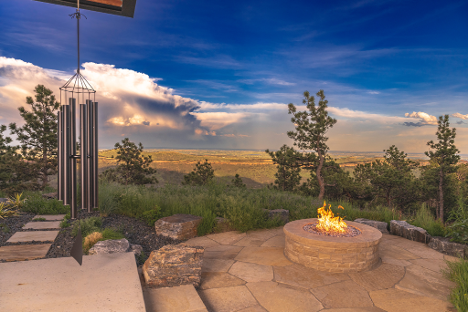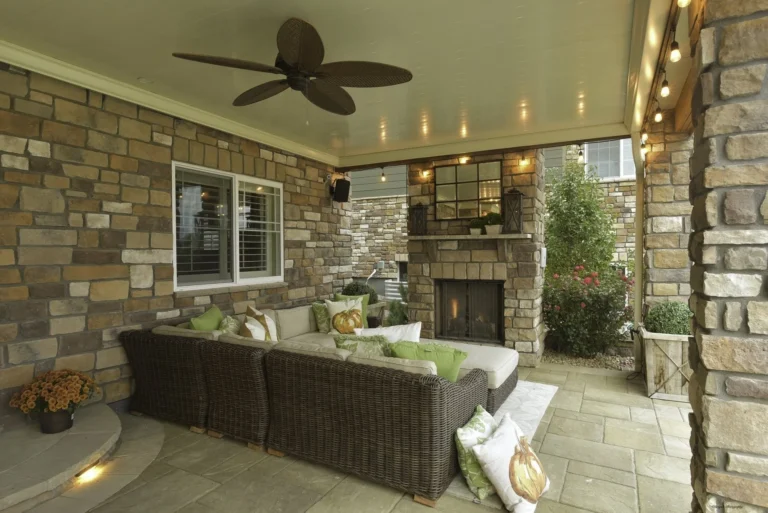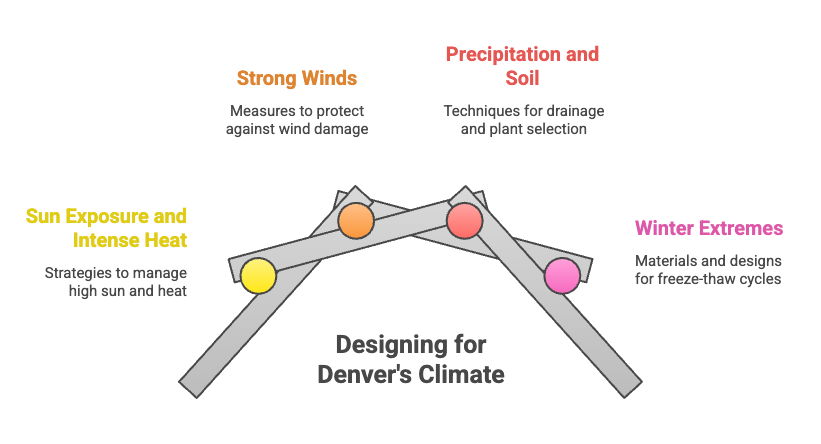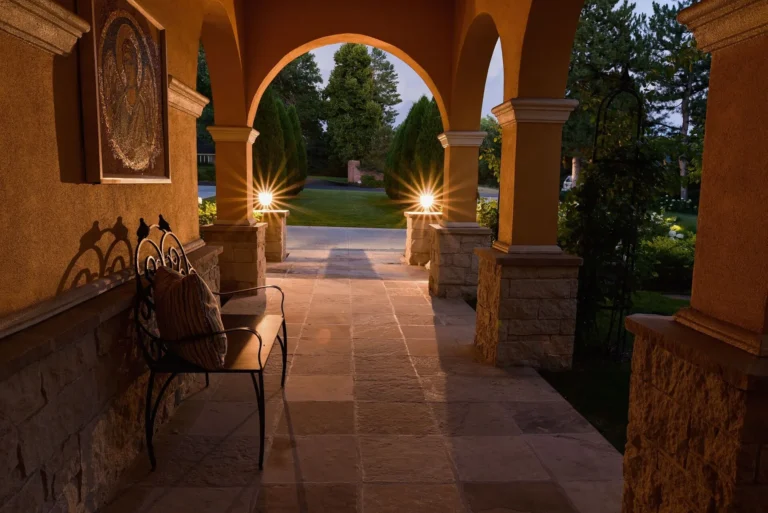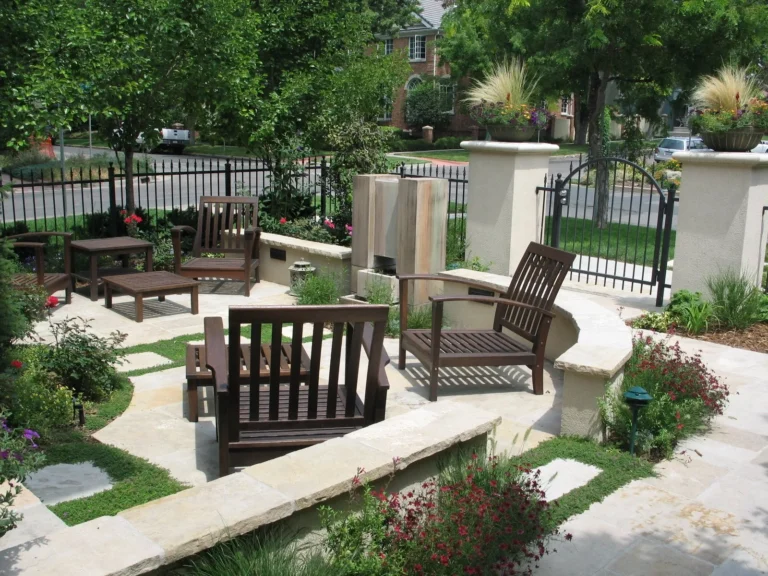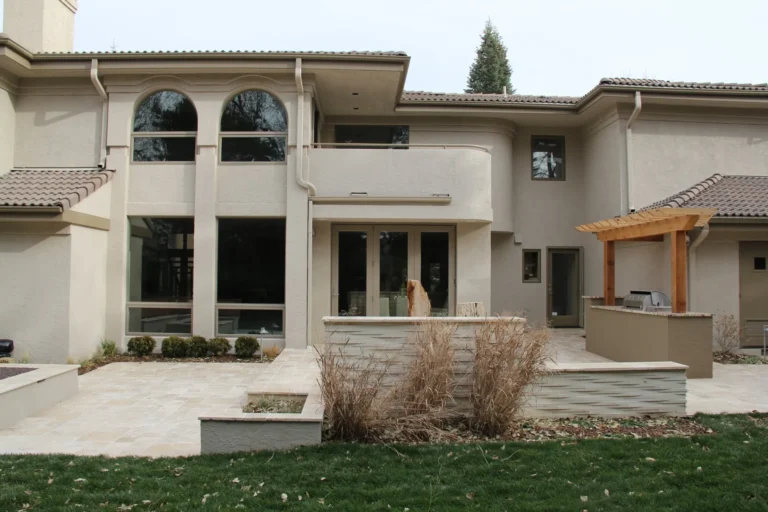The Sustainable Sanctuary: Designing Eco-Conscious Fire and Water Features to Elevate Outdoor Living
Elevating Outdoor Living Sustainably in Denver
At Phase One Landscapes, we believe that luxury outdoor living and environmental responsibility go hand in hand. As a trusted leader in Denver custom landscape design, our mission is simple: to create beautiful, enduring outdoor spaces that respect the unique environmental realities of our region. We’re not just landscape architects, we’re stewards of Colorado’s natural beauty, and we’re proud to have been recognized with over 17 ALCC Excellence in Landscape Awards for our creativity, craftsmanship, and commitment to quality.
Colorado’s Front Range is a place of dramatic seasons and stunning vistas, but it also presents real challenges, think water scarcity, altitude, and the infamous freeze-thaw cycle. That’s why every project we take on is rooted in a deep understanding of our local climate, regulatory environment, and the values of our community. As one of our founders often says, “Great design isn’t just about aesthetics, it’s about creating outdoor spaces that last, and that tread lightly on the land.”
If you’re dreaming of a custom fire pit, an elegant outdoor fireplace, or a soothing water feature, we’re here to help you bring that vision to life, sustainably. Ready to get started? Contact us today to schedule your consultation and let’s build something extraordinary together.
Understanding Denver’s Regulations & Environmental Context
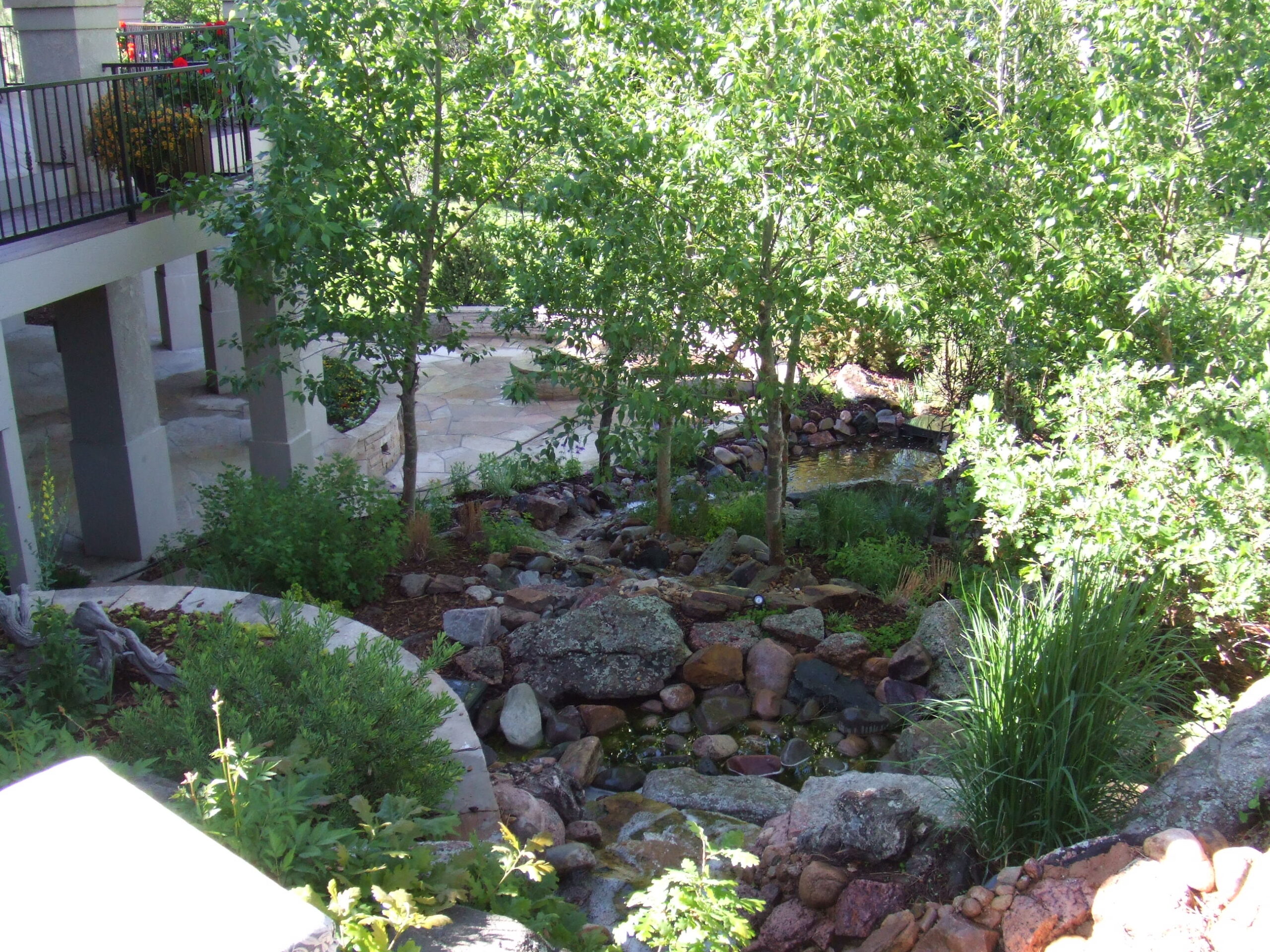
Designing outdoor fire and water features in Denver means navigating a landscape of both opportunity and responsibility. Local regulations are in place for good reason: to protect our air quality, conserve water, and reduce fire risk in our often-dry climate.
Fire Features: What’s Allowed?
- Wood-burning fire pits and fireplaces are generally prohibited in Denver unless you obtain a special open burning permit. Violations can result in hefty fines, and even then, use is often restricted to special events.
- Gas fire pits (propane or natural gas) are the go-to solution for most homeowners. They’re allowed without a special permit, provided you follow placement and safety guidelines. (For example, keep fire pits at least 10 feet from structures and avoid using them on balconies in multifamily dwellings.)
- Safety first: Always have a responsible adult present and a way to extinguish the fire at hand.
Water Features: Conservation is Key
- Denver’s water use restrictions and ongoing drought concerns mean that traditional, high-evaporation water features aren’t always the best fit. Our designs are tailored to maximize water efficiency, often integrating recirculating systems and rainwater harvesting.
- We handle all permitting, HOA reviews, and regulatory compliance for you, so you can enjoy your new sanctuary worry-free.
Pro tip: Regulations can change seasonally or by neighborhood. We stay up-to-date so you don’t have to.
Sustainable Fire Features: Green Heat for Your Custom Space
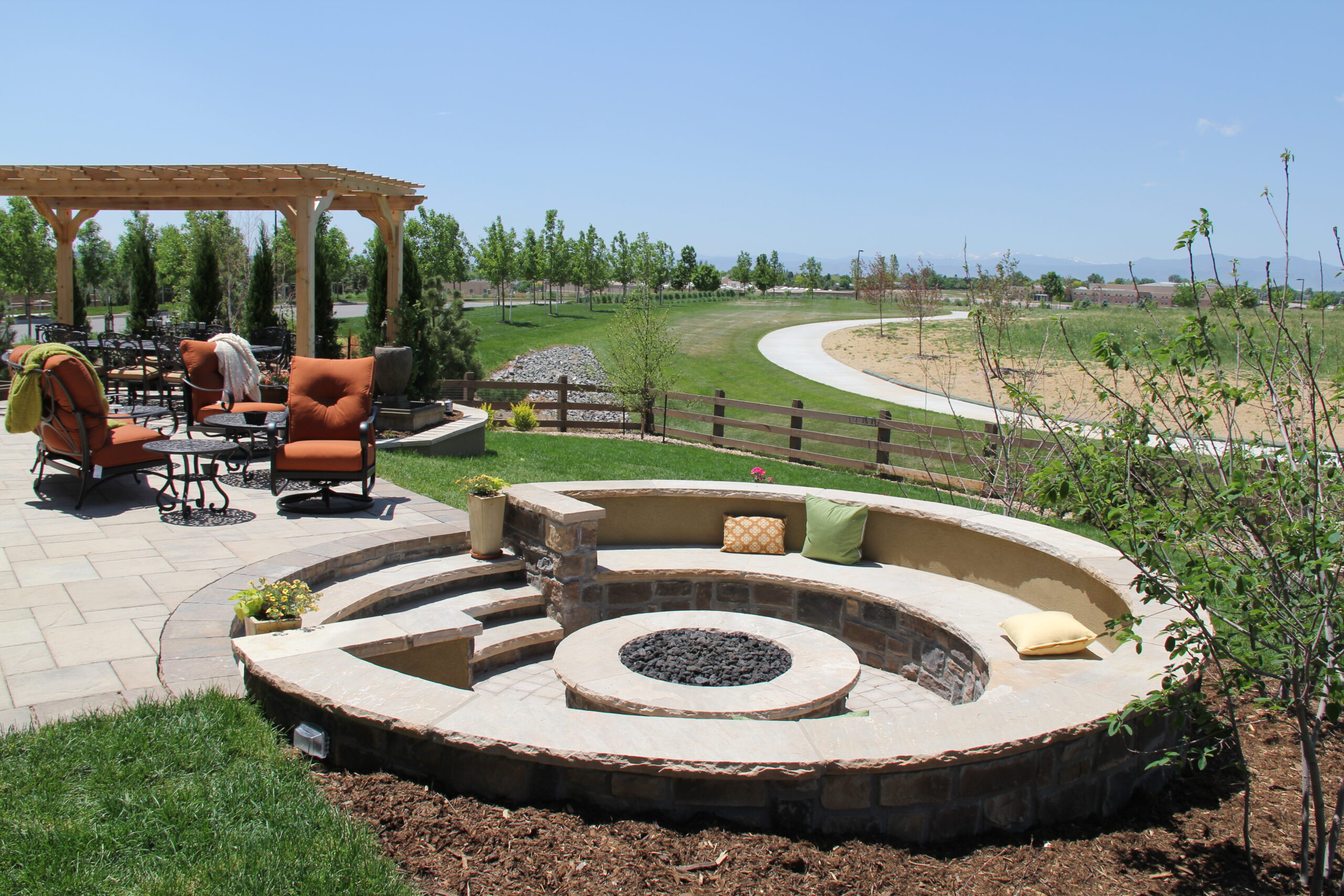
Moving Beyond Traditional Wood: Cleaner, Greener Fuel Options
Let’s face it, nothing beats gathering around a fire under the Colorado stars. But traditional wood-burning fire features come with downsides such as smoke, particulates, and, in many cases, outright bans.
Eco-friendly alternatives we recommend:
- Natural Gas & Propane: These fuels burn cleanly, offer instant on/off control, and require minimal maintenance. They’re ideal for extending your outdoor season responsibly and are fully compliant with Denver’s codes.
- Bioethanol: An alcohol-based fuel made from organic materials, bioethanol offers a smokeless, odorless flame and dramatically reduces CO2 emissions. It’s perfect for modern aesthetics and conscientious homeowners.
- Compressed Wood Bricks: For those who love the crackle of a wood fire, compressed wood bricks, made from recycled sawdust, produce up to 50% less particulate matter than traditional logs.
“We’re passionate about giving our clients options that are both beautiful and responsible. It’s not just about what looks good today, it’s about what’s sustainable for tomorrow.” — Phase One Landscapes Leadership
Sustainable Materials & Construction for Lasting Luxury
A truly sustainable fire feature is built to last. That’s why we prioritize:
- Locally sourced natural stone (like stacked stone and flagstone)
- Freeze-thaw resilient masonry and concrete
- Recycled steel and eco-friendly construction techniques
By using materials that withstand Colorado’s wild temperature swings and require less frequent replacement, we help you minimize waste and maximize your investment.
How We Build for Colorado:
We’ve seen too many beautiful features fail because they weren’t designed for our climate. Our team combines decades of local experience with innovative construction methods to ensure your fire feature stands the test of time, season after season.
Safe, Compliant, and Designed for Denver
Every Phase One Landscapes fire feature is designed with safety and compliance at its core.
- Placement: We ensure safe distances from structures, trees, and property lines.
- Permitting: Our team handles all paperwork and inspections.
- Custom Design: We tailor every project to your property, your style, and your neighborhood’s requirements.
We take pride in making the process seamless, so you can focus on enjoying your outdoor living space.
Water-Wise Water Features: Conservation as a Design Principle
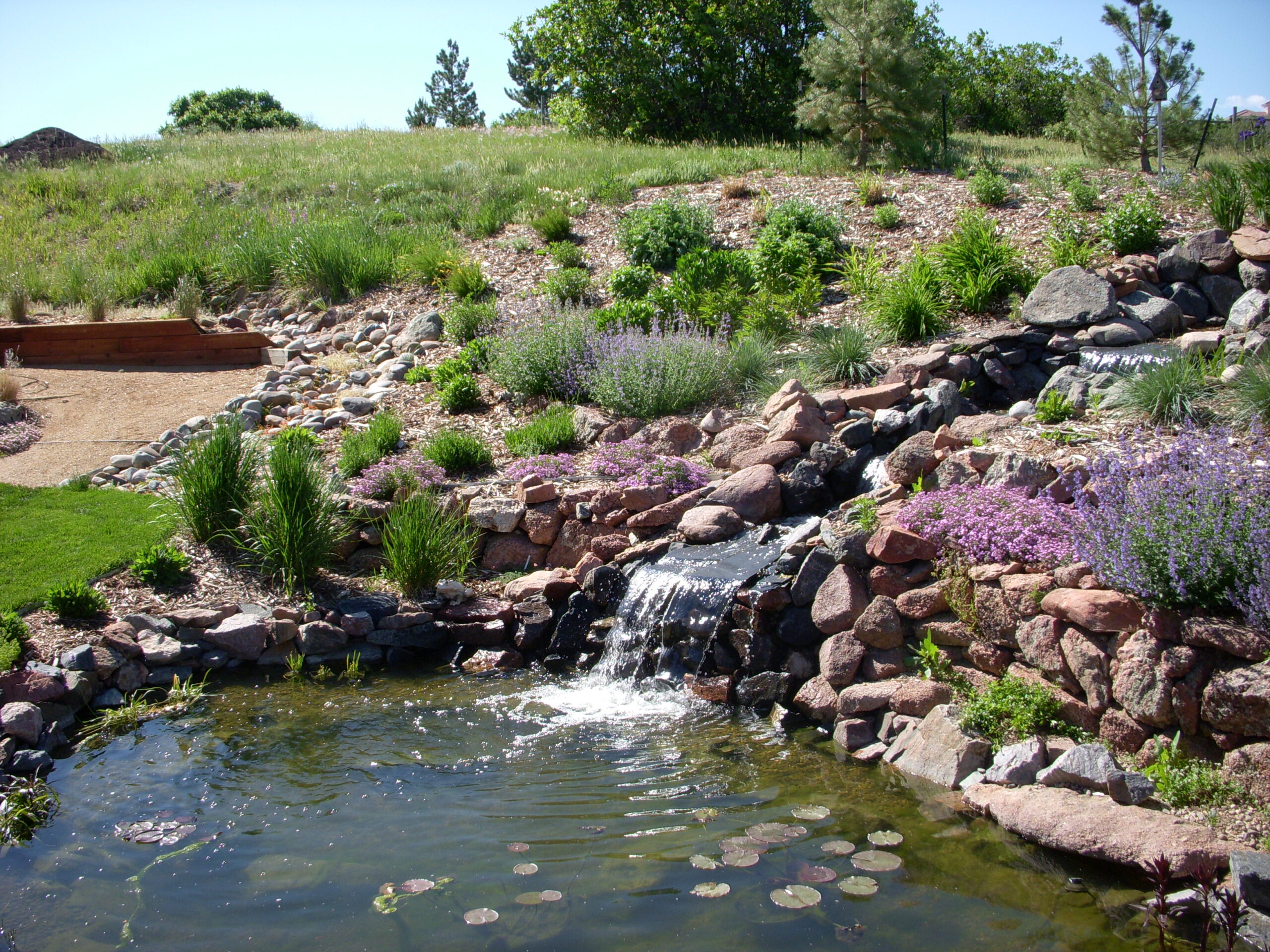
Busting the Myth: Are Water Features Wasteful in Denver?
We hear it all the time: “Aren’t water features wasteful in a place like Denver?” It’s a fair question, especially with headlines about drought and water restrictions. But here’s the reality: with smart design, water features can actually be part of the solution.
Modern water features can use less water than a traditional lawn, especially when they’re designed to recirculate and harvest rainwater. In fact, our systems often capture and recycle thousands of gallons each year, turning what would be runoff into a self-sustaining, beautiful focal point.
Client Story:
One Denver family was concerned about adding a pond to their xeriscaped yard. By integrating rainwater harvesting and a recirculating pump, we created a pond that supports pollinators and birds, without increasing their water bill.
Rainwater Harvesting & Smart Water Management
Water is precious here. That’s why we often tie custom water features directly into your home’s downspouts, capturing rainwater for reuse. Our designs include:
- Oversized underground reservoirs (like AquaBlox) that store water for weeks at a time, drastically reducing the need for manual refilling, even in drought conditions.
- Recirculating pumps and filtration that keep water clean, clear, and moving, minimizing evaporation and maintenance.
How We Do It:
We approach every project with the mindset, “How can this feature give back to the landscape?” Rainwater integration isn’t just an add-on, it’s central to our philosophy of water-positive design.
Pondless Waterfalls & Eco-Friendly Feature Types
Looking for something modern, low-maintenance, and water-wise? Consider:
- Pondless waterfalls: These features circulate water through hidden reservoirs, using less water and requiring less upkeep than traditional ponds.
- Bubbling rocks and recirculating fountains: Perfect for patios and small spaces, these features offer soothing sound and movement without significant water use.
- Ecosystem ponds and streams: When designed right, these features become valuable habitats for birds, insects, and pollinators, enhancing local biodiversity.
“Our goal is to create outdoor environments that are as functional and resilient as they are beautiful. Every drop counts.” — Phase One Landscapes Team
Choosing Efficient Components
Efficiency isn’t just about water, it’s about energy, too. We recommend:
- High-efficiency pumps with smart controls to minimize electricity use.
- Advanced filtration systems to keep water clean with less intervention.
- Low-voltage LED lighting for nighttime ambiance with a minimal footprint.
We stay on top of the latest technology, so your water feature is as sustainable as it is stunning.
Actionable Advice for Sustainable Feature Maintenance
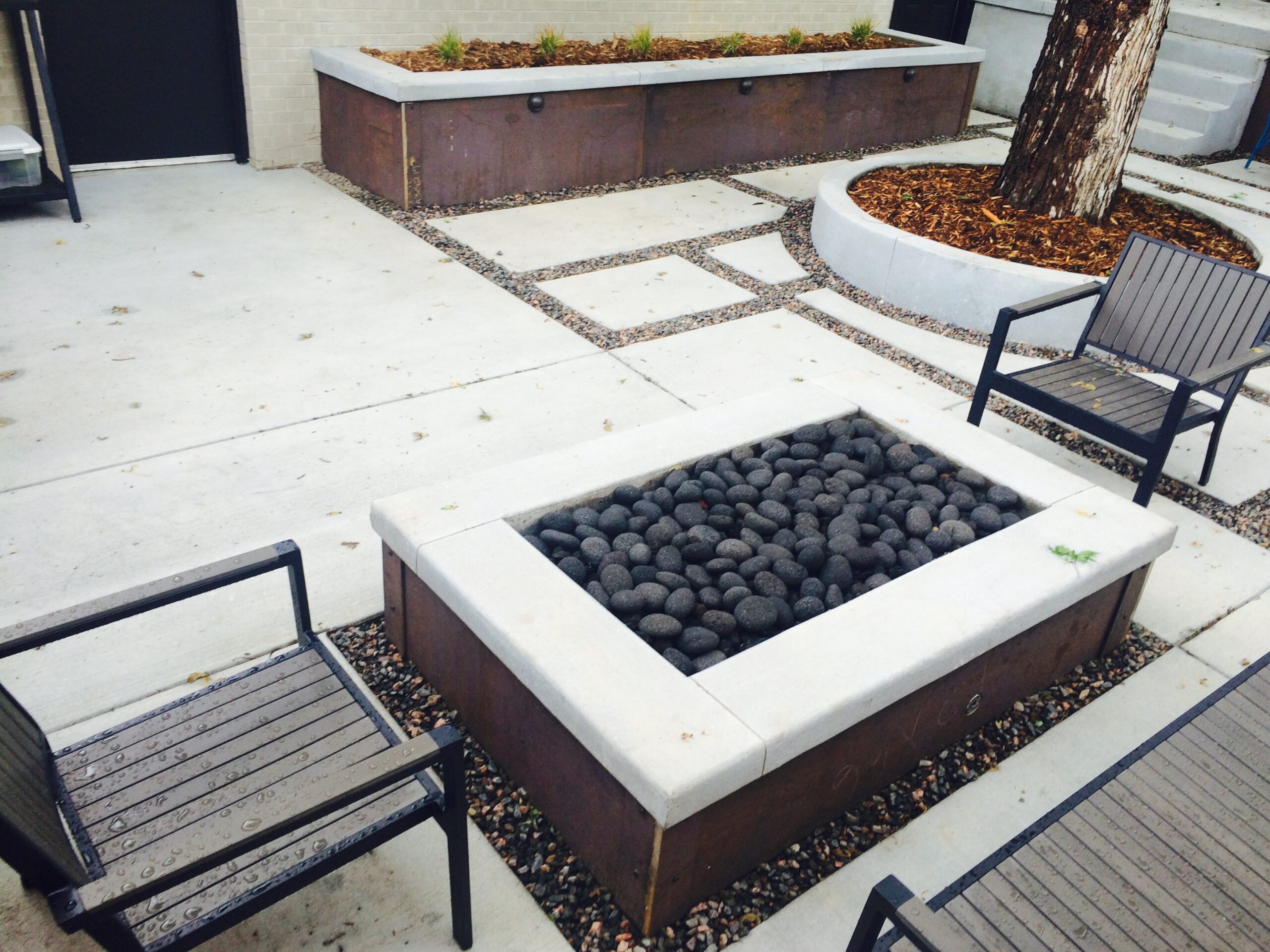
Eco-Friendly Upkeep for Fire Features
Keeping your fire feature green is easier than you might think. We recommend:
- Natural cleaners: Skip harsh chemicals. Simple solutions like vinegar and baking soda are effective and eco-friendly.
- Ashes as soil amendment: If you use wood or compressed wood bricks, sprinkle cooled ashes in your garden, they’re a natural fertilizer.
- Seasonal checks: Inspect burners, gas lines, and masonry for safety and longevity, especially after winter.
Water Feature Care That Conserves
A little maintenance goes a long way:
- Leak checks: Regularly inspect for leaks to prevent water loss.
- Water reuse: Top up with rainwater when possible, and monitor water levels to minimize waste.
- Eco-friendly treatments: Use natural enzymes and beneficial bacteria to keep water clear without chemicals.
Our team offers maintenance plans, but we’re always happy to share tips for DIYers who want to keep their features thriving.
Why Choose Phase One Landscapes for Sustainable Outdoor Living?
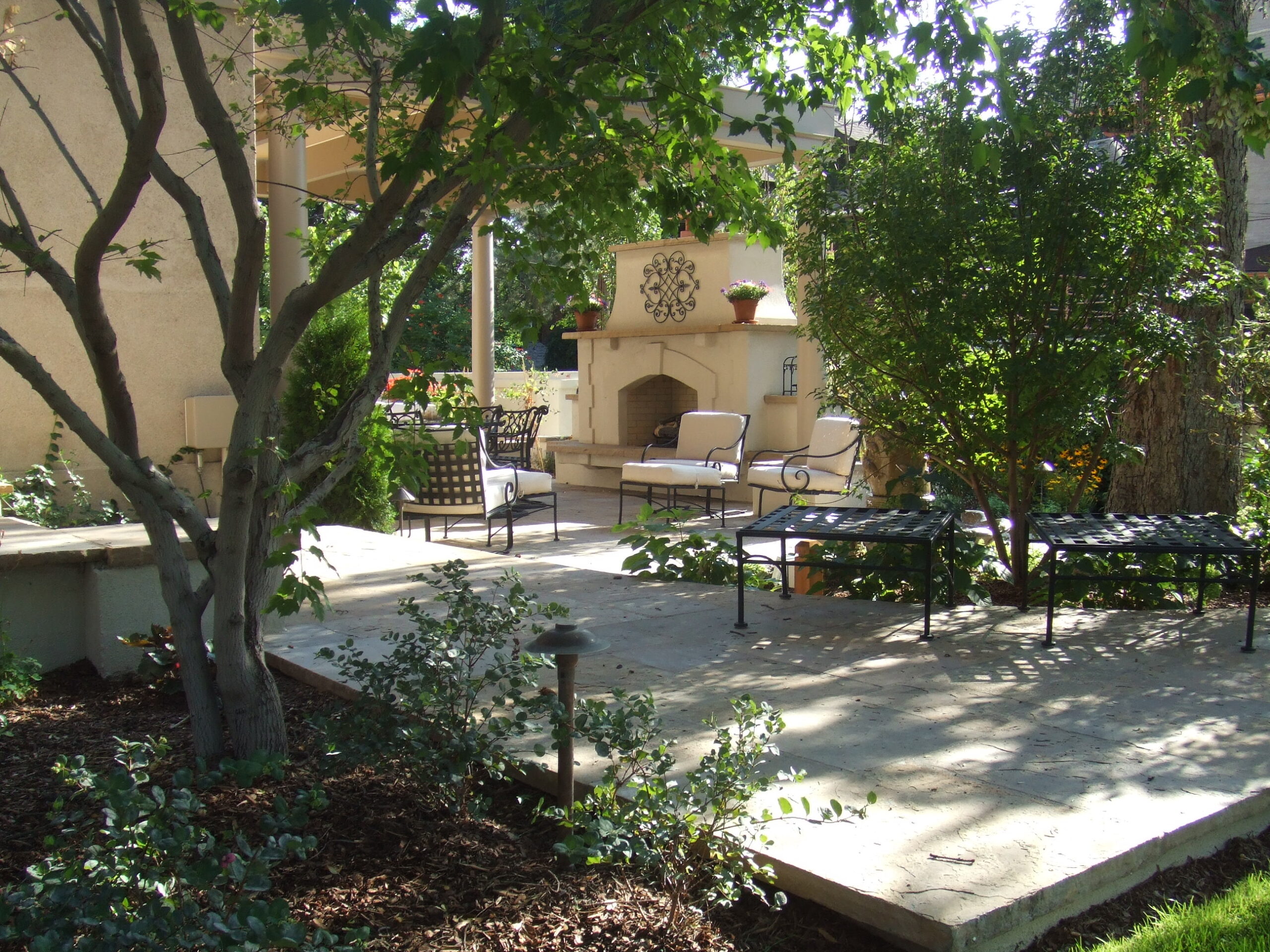
Choosing a partner for your outdoor sanctuary is a big decision. Here’s what sets us apart:
- Award-winning design and construction: Over 17 ALCC Excellence in Landscape Awards and counting.
- Local expertise: Decades of experience navigating Denver’s climate, codes, and neighborhoods.
- Seamless design-build process: From 3D renderings to final walkthrough, we’re with you every step of the way.
- Sustainability at our core: Every project is an opportunity to create beauty and resilience, not just for today, but for generations.
“We don’t just build landscapes, we build trust. Our clients know they can count on us for honesty, craftsmanship, and a commitment to doing what’s right for their property and the planet.” — Phase One Landscapes Owner
We understand that every client is unique, and we take pride in creating outdoor spaces that reflect your values, your lifestyle, and your dreams.
Start Your Sustainable Outdoor Transformation Today
Ready to create your own sustainable sanctuary? Let’s make it happen, together.
Request an appointment with Phase One Landscapes today to schedule your personalized consultation. Whether you’re envisioning a custom fire pit, an elegant outdoor fireplace, or a water-wise feature that supports local wildlife, we’ll guide you from concept to completion with creativity, expertise, and a genuine passion for your project.
Let’s build something extraordinary together, right here in our community.
Frequently Asked Questions
Are wood-burning fire pits allowed in Denver?
Generally, no, unless you have a special permit. We recommend natural gas or propane options for most clients, as they are cleaner, compliant, and more convenient.
Can water features really be sustainable in our dry climate?
Absolutely. With recirculating systems, rainwater harvesting, and smart design, modern water features can use less water than a traditional lawn and even support local wildlife.
How do you ensure my feature will last through Denver’s winters?
We use materials and construction methods specifically chosen for our freeze-thaw cycles, and we offer seasonal maintenance to keep everything running smoothly.
What’s the process like with Phase One Landscapes?
From the first consultation to the final walkthrough, our team handles every detail, design, permitting, construction, and ongoing care. You’ll have a single point of contact and a partner you can trust.
How can I get started?
Simply reach out to us to schedule your consultation. We’ll listen to your vision, assess your space, and develop a plan that’s uniquely yours.
At Phase One Landscapes, we’re passionate about blending beauty, function, and sustainability. Let’s work together to create an outdoor living space that’s as inspiring as the Colorado landscape itself.

About Phase One Landscapes
With over 35 years of experience serving Denver and the Front Range, Phase One Landscapes creates outdoor kitchens that transform the way you live. Our award-winning team combines thoughtful design, expert construction, and a commitment to results that last.
Ready to elevate your backyard and your lifestyle?
Contact us today to begin your journey toward the ultimate Denver outdoor kitchen.
This article was crafted to reflect the authentic voice, expertise, and values of Phase One Landscapes, your trusted partner in transforming outdoor living in Colorado.

Written by Dave Graham
Dave is a Denver native and co‑founder of Phase One Landscapes. After earning a B.S. in Landscape Architecture from Iowa State University in 1981, he worked as a laborer, construction foreman, and designer, learning residential design/build from the ground up. In 1988 he partnered with Dennis Frank to launch Phase One Landscapes, which has delivered hundreds of landscapes across Greater Denver. Dave prioritizes quality and service and remains involved with clients and teams. The firm’s projects have earned ALCC awards, appeared on ASLA Garden tours, and been published in national and local magazines.


